#but that show's take on fusion is what this is 100% influenced by
Explore tagged Tumblr posts
Text
been thinking about steven universe a lot again lately, so i'm gonna be cringe and. fuse. my special interests
i made a steven universe esque fusion of off the hook -- meet caesarea!!!!

#might make an entire au out of this idea tbh#also yes i am aware that the concept of fusion was not invented by nor is unique to steven universe#but that show's take on fusion is what this is 100% influenced by#plus i'm not all too familiar with any other media's take on fusion outside of like. celeste. maybe dragonball z too#anyway back to your regularly scheduled tagging#deanthe#steven universe#fusion#splatoon#splatoon 2#splatoon 3#off the hook#off the hook splatoon#splatoon pearl#marina splatoon#pearlina
85 notes
·
View notes
Text
Danny Phantom - Worm fusion
Or well more of a “parahumans AU” of Danny Phantom; pretty much the only thing from Worm is the parahuman power stuff rather than the specific characters/locations being explicitly included. Basically “what if Danny Phantom involved Capes instead of ghosts”
Btw the links throughout this are generally to the wiki pages for things in case anyone is unfamiliar with anything. Or the general wiki links are here (DP) and here (Worm)
Jack and/or Maddie Fenton previously triggered and gained Tinker powers due to their ongoing obsession with trying to prove their scientific theories (which could be about ghosts or be something more Worm-y (e.g. potentially involving alternate earths or trying to find the origin of parahuman powers)).
Those new powers certainly didn’t improve the chaotic nature of their lab, but it did allow them to make far more complex devices.
The biggest of which is in the form of a portal. It’s taken a lot of work to create, but they’re hopeful that it will finally prove them right now that they’ve completed it. Finally make all the hardship they went through (enough to hardship to trigger) worth it.
…Except it fails. They plug it in, and nothing happens.
Well, nothing yet…
Later, their son Danny takes a few steps into the portal frame on a dare, and his hand knocks against a panel on the wall. A huge burst of electricity surges through the structure as a rift tears through the air.
Right on top of his fragile human body.
Energy courses through him as his vision is filled with the impossible sight of countless dimensions, of the near-endless expanse of space, and of gargantuan creatures spiraling through it all.
And then he collapses, the memories of what he saw slipping away from his brain as his new powers settle into his body.
(His parents, if they are nearby, see the visions too. The sight feels familiar, even if they can’t remember why. But any further consideration is shelved when they realize the portal is on.)
More misc thoughts about this idea beyond the cut:
I figure this’d be a setup that leads to getting a Trump power, since the trigger directly relates to another parahuman’s powers. Plus, a Trump power that allows for a bunch of different facets would align with his array of ghost powers from the show.
Specifically, it’d probably fit the “Infinity/Ten” subtype of Trump; those are caused by triggers that involve “a power breaking reality in the vicinity.” I think an unstable portal being opened on top of you should definitely count for that.
…But then idk how one would design a power of that type well. The description of “Power sets nearly limitless in both option and choice” feels hard to design for in a way that isn’t too OP, even with the “but where other large drawbacks often apply” caveat. Mainly from like, the word “limitless” interfering with my ability to tell what restrictions are reasonable.
…although. The subtypes are’t meant to be strict in-universe guidelines; I could just rebalance it based on ideas from other Trump power types that I find easier to conceptualize and it’d be fine even if it’s not “objectively correct” for the Infinity type.
Heck even if I felt that need to strongly justify it, the situation fits pretty close to triggers for the “Four” subtype (power sets that are limited to a few usually weaker/clunkier power options). His parents were obsessive tinkers; powers would have been a factor influencing his life for a while.
Also, outside of Trump power stuff, a Breaker state would make sense to fit closer in line to his ghostly nature from the show. Not 100% sure if that’d fit his trigger, but whatever. Maybe could just argue that the portal mucked with his senses/thoughts enough to justify an intertwined mental aspect of the event, idk.
…oh I just had an idea for what the actual power could be!
What if he has to be in his breaker state to use powers, and he can only select which powers to use at the moment of transformation? Meaning he has to choose his powers before he enters any fights and likely stick with just them for the duration of that fight.
Limits could be imposed based on what he chooses (e.g. if his powers are weaker the more he has active) and how he switches back and forth (he’d have to deactivate all of his powers to swap any out and maybe he has to recharge them before he can access them again, leaving him vulnerable in the meantime).
Might want to limit his power options too (unless just limiting the strength of the powers would be enough), but idk what a good rule for that would be. Like it could just be an arbitrary list of options I guess, but something more distinctive might be interesting. Maybe he has to experience something similar to a power before he can use it? Idk.
Also, outside of his powers, I’m not fully sure how one could best work in an equivalent to the ghost fights from the show. Like they could absolutely just be other capes in Amity Park, but I feel like it’d be cool to connect them to Danny or the portal somehow.
For some possible ideas for that, I guess:
They could have been in a cluster trigger with Danny (as long as the other triggers could be reasonably justified to have coincided with the portal activation)
The portal could have let some Eden material leak through, causing some people in the area to randomly gain powers (and probably mutations too) after consuming anything contaminated
If the portal is a unique phenomenon (e.g. if the straight-up Ghost Zone is included on top of the Worm stuff), the Shards could be incentivized to create more triggers in the area or prod existing hosts towards Amity Park to create more conflict and help them study it
If the portal leads to another world (or periodically connects to multiple other worlds), they could just be “regular” capes but pulled through from there
It wouldn’t be related to that portal incident, but if Vlad Masters was a power-granting Trump (akin to Worm/Ward’s Teacher), the ghost-analogues could be his empowered minions sent after the Fentons
…or they could just still be ghosts I guess, but I’m trying to lean this more on the Worm side of worldbuilding things than DP.
And some even more one-off random thoughts:
The GIW would just be a government-backed group akin to the PRT. Heck they could just be replaced by the literal PRT and Protectorate if it’s meant to be a full-on fusion with Earth Bet
If the portal is causing Eden material to leak through, Amity Park might end up evacuated/made into a quarantine site.
Instead of being given tech by Vlad like in the show, Valerie Gray’s situation could be reworked into a trigger event, with her probably being a vigilante afterwards (like as opposed to joining an actual hero team). Or if you wanted to keep the “given powers” thing in a slightly more directly parahuman-y way, she could get a Cauldron vial (maybe one supplied by Vlad to keep more similarity with the show). (though that would require including Cauldron in the fic too, at least in the background)
Skulker could be a Deviant/Case 53 who is similar to Trainwreck
I guess the implication of Fenton Works existing would be that Jack and Maddie are rogues who are open about their identities
Which could connect to why Danny is hiding his powers from them - unlike the original show, he has no reason to fear them taking the reveal badly, but he could want to keep his cape and civilian identities fully separate and thus not want to tell them lest they reveal it to the public
#parahumans#worm crossover#parahumans crossover#worm fusion#parahumans fusion#danny phantom#dp#danny phantom crossover#danny phantom crossover prompt#dp crossover prompt#dp fusion#danny phantom fusion#well. half prompt half rambled thoughts
9 notes
·
View notes
Text
ALRIGHT ITS TIME TO SPECULATE WILDLY ABOUT A GAME THAT ISNT EVEN OUT YET!!
youtube
Prime 4 is gonna take place on a single planet
Based on mostly the end shot with the view on the massive forest planet, I’m willing to bet Prime 4 is going back to the roots of the series and keeping to one planet. While I personally liked hopping between planets in Prime 3, it did make the game feel less…connected. Like in Prime 1 and 2 all the individual areas connect to each other, and there’s plenty of paths you can take where you’re suddenly back in the starting area, or the back half of an area you passed through briefly, and it was part of the charm.
The planet is gonna be another Chozo planet
I know, shocking, the Chozo were on a planet and maybe influenced it if not lived on it fully. It’s a staple of the series, but there’s more reasons than that. One, a prevalence and respect of nature is part of the Chozo’s whole deal, and I think that last shot is hinting towards that with that absolutely massive tree in the background (maybe something akin to the impact crater in Prime 1, at least in relevance to the plot?) Two, with Sylux having the hatched Metroids seemingly under his thrall (something the Space Pirates could never really accomplish without hijacking Chozo shit) it seems like he found something to do that. And Three, related to the Metroids, you know how their whole deal is they only go through their whole life cycle while on SR388? Well, what if it wasn’t? Sure, the Metroids were eventually sent there to deal with the threat of the X parasite, but what if the Chozo wanted to test them other places? A large, temperate forest planet might be good for that.
Prime 4 is going to be more like Prime 1 and 2
Okay, so, based mostly on the small hints of UI that we get (with the missiles being a specific selectable option as opposed to fired with a separate button press or combo of buttons) I’m willing to bet any beam upgrades will be switchable (plasma, ice, wave in prime 1. Light, Dark, Annihilation in Prime 2). This is a good thing, cause, even though I’m a massive shill for Prime 3, the beam swapping is a much better mechanic, it adds a bit more depth to combat and puzzles as opposed to “oh, new upgrade, now your beam can do everything”
Sylux is going to be a repeated boss fight, but not the Final Boss.
Considering his prevalence to the story, I think it makes sense that he shows up multiple times, like Dark Samus in Prime 2. However, I don’t think he’s gonna be the Final Boss, that just seems…too easy?
Phazon is gonna make a return/will be part of the actual Final Boss
I know Phazon was “technically” destroyed with the destruction of Phaaze at the end of Prime 3, but hear me out. The Galaxy is a massive fucking place, and the lore for the Leviathans (the things that get launched at planets to corrupt them) says that they get launched every 100 years, and that countless planets have probably been infected. Phaaze may have been the head of the snake, but we’ve seen how Phazon is literally alive, so who’s to say there isn’t a proto-Phaaze still out there? Maybe that’s why the Federation is out there in the first place, they discovered this planet is a proto-Phaaze, or is in the process of becoming one, and they’re researching it?
Prime 4 will cement the Federation as bad guys, if not wildly incompetent
So, we’ve gotten that theme in Other M(my beloathed), Fusion, and Dread now, and it kinda lingered in the background of the Prime games as well. The Federation is often messing with shit out of their ability to control, and Samus usually gets called in as clean up crew. Their fighting over Phazon with the Pirates is what leads to the events of Prime 3, their research base on Aether is the reason Samus got called there, and now she’s heading to another Federation facility that’s under attack. I would not be surprised if the game, and Sylux specifically given his hatred of the Federation, starts pointing the finger at the Federation for all the shit they’ve done.
#metroid#Metroid prime 4#just rambling because I have so many thoughts and theories that I must get them out#do i think all of this is accurate? fuck no#but I do think there’s precedent for most of if not all of these thoughts#Youtube
7 notes
·
View notes
Text
On May 8th, we also venerate Ancestor Robert Johnson on his 112th birthday 🎉

A renowned ICON of Hoodoo History, Culture, & Folklore, and a Delta Blue's legend, Robert Johnson's storied yet brief success has cemented him at the crossroads of Hoodoo Folklore & American History. He is known for his exceptionally eerie singing & masterful guitar play amid living a hard and fast life; after having struck a deal with the Devil to become one of the greatest Blue's musicians of all time.
According to Hoodoo Folklore, it was a cool October night when Robert Johnson walked alone with his guitar down a dark road in the Mississippi River Delta on a full moon night to the crossroads at Highways 49 & 61 in Clarksdale, Mississippi. As he walks he thinks about his sorrow. He thinks about the jeers & shouts for him to get off stage. In his misery, he cries out into the night. For his weakness, jealousy, fear, & the anguish of failure. But he’s not alone. Here, he meets the Devil. The Devil heard his cry & appeared, offering to fashion him a talent so he could play unlike any other in exchange for his soul. Thus Robert Johnson rose to fame as the King of the Delta Blues.
Robert Johnson was the eleventh child of his mother's children & born out of wedlock. He was born and grew up with his mother in Hazlehurst, Mississippi until he left to stay with his father for a time in Memphis,TN. His childhood is largely a mystery. Those that knew of him, claimed that he took up the diddley bow (a wire attached to nails sticking out of houses), as music was his life long interest.
As a teen, Robert Johnson met fellow Blue's legend Son House and Willie Brown. They became his musical mentors as they played in small towns throughout the Mississippi Delta. Thus began his showmanship & his iconic fusion of singing, guitar-playing, & songwriting. From then on he lived the life he sang about, the life a mysterious traveling musician. Though as the old folks of the era would say, “The Blues was never meant to be taken seriously or reflectively. It was simply a force, expressing the deepest roots of their lives”. That there are only 3 known photos of him in existence only adds to his mystery.
By 1931 he was a popular name in bars and nightclubs throughout the region. While passing through Jackson, Mississippi in 1936, Robert Johnson caught the eye of a talent scout who'd go on to arranged his first recording session, which went on to selling 5,000 copies throughout the region. This was the very 1st time that Robert Johnson's singing voice & guitar play was recorded. Despite his short life & career, he became a major influence on Blue's & Rock N Roll in the '60s & '70s. He'd go on to influence the likes of Bob Dylan, the Rolling Stones, Jimi Hendrix, Led Zeppelin, the Allman Brothers, and Eric Clapton. In 1961 Columbia Records released, King of Delta Blues, which was a compilation of his early recordings; spanning just 29 cut between 1936-1938.
In 1938, a music producer at Columbia Records learned about his recordings & sought him out to perform at Carnegie Hall in NYC in front of an all-Black crowd. Unfortunately, Robert Johnson passed away the night before the show was set.
To this day, the cause of his death remains in dispute. Some say he was shot dead by the man of a paramour he'd messed around with. Others say it was a poison that killed him. His death certificate, however, officially states that his cause of death was Syphilis. Still, whether literally or figuratively, there are those who believe that the Devil did in fact collect his due.
At the time of his death, his grave remained unmarked thus no exumation effort could ever conclude with 100% certainty that the uncovered remains are his. Today, what has long-since been presumed to be his remains, is buried in Little Zion Baptist Church's cemetary, in Greenwood, Mississippi.
"I pray that my redeemer will come and take me from my grave" - Robert Johnson’s final words
We pour libations & give him💐 today as we celebrate him for his legendary contributions to the art, history, and lore of Blue's & Black Culture. May we elevate him in light & healing.
Offering suggestions: listen to/share his music, play Mississippi Delta Blue's , & menthol cigarettes paired with dark liquor
*Note: offering suggestions are just that & strictly for veneration purposes only. Never attempt to conjure up any spirit or entity without proper divination/Mediumship counsel.
#hoodoo#hoodoos#atr#the hoodoo calendar#atrs#Hoodoo History#Hoodoo Folklore#the crossroads#crossroads#devil at the crossroads#juju#Mississippi delta blues#king of delta blues#blues music#black history
68 notes
·
View notes
Note
hiiiii!!! i haven’t interacted with you much but i was wondering! if you perhaps had any personal hcs/lore for nnt!! i’m writing a melban fic and currently begging for lore so!!!!!! hi! hope you have a wonderful day/night!!!
Hmmmmmm I think the main hcs that I have for the characters are influenced by other people's AUs/hcs so...
For Mel, it's mainly just the demon form cat stuff. I think at some point I read about someone saying that maybe demons get to pick the shape of their wings when they get them? I also like thinking of Meliodas having double horns (a pair coming out of his forehead and a pair on either side of the top of his head) that have grown in with time (maybe takes 100-200 years to grow fully?) And he has the typical demon tail and bla bla bla. Mostly physical appearances. There's fangs in his mouth, not like.. Vampire fangs, but fangs that can tear through meat easily (I haven't drawn him like that yet I think). Also - extreme flexibility, but that could somewhat be established in the show.
For Ban, I don't have too much? Maybe he has a super soft spot for Meli or smth. He likes cuddles about as much as he likes sparing, he looks kind of intimidating but he's super chill. He gets freaked out when Meliodas does contortionist type shit. He also teaches (or at least tries to teach) Meliodas how to cook properly by making the food the right way, but Meliodas very rarely listens completely because he has the attention span of less than 10 seconds OR he fucks it up to mess with Ban.
Anyways Ban is malewife and Meliodas is his pet cat. I think that's all for what I think about those two?
In terms of lore (like, story wise), I think that Meliodas didn't know how to write or read in English or whatever language they use in Britannia (which I assume is, like, anglo saxon or smth), and when he did learn, he developed an Irish accent because I am a strong believer in him being Irish (cuz, y know, Britannia). Demons and Goddesses speak semitic languages because of me thinking about religion and stuff and how Christianity, Judaism, Islam, etc originated in the Middle East, Fairies are Eastern European to me idk why, Giants are..???? Whatever you wish, and humans are everywhere as expected. Vampires are also Eastern European because I searched it up and liked it. They have traditional dances and such - demons and giants have their dances connected to their fighting (giants dancing makes them stronger, demon dancing is just fusion dance w martial arts, like capoeira.), fairies create more lively atmospheres with dancing, I guess, and goddesses, since they're more "elegant", would have smth real classical. Fairies didn't really involve themselves in war too often, giants and demons involved themselves the most, and goddesses did it because of their VERY strained relationship with demons. Ehmmm, what else..... Meliodas never opened up to ANYONE. Like ever. Until he fully gained their trust (which could've taken months, years, decades even.) Ban's on the same boat. Anyways, after the sealing of the demons and the destruction of the goddess race (I may be incorrect, it's been a while since i watched the anime or read the manga), and since the humans are selfish and also gullible, they made history all about how bad demons were. They didn't see demons as actual people, whatever whatever, bla bla bla, you know the rest. Led to incorrect depictions of both races in history and what not.
That's just me, though. You can write whatever you want.
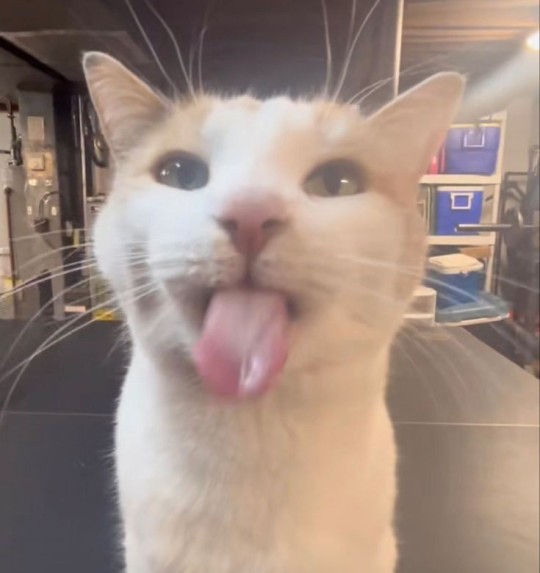
#thanks for asking tho#sorta went on a rant#sorry if this is of no help#im tired#nanatsu no taizai#nnt#seven deadly sins#7ds#bleeehhhh!
10 notes
·
View notes
Note
barring the no mercy route being an influence in this case, how would you describe chara's personality? I cannot describe them well at all despite them being my favorite character. they're too complex lol. all of the meta i can find at this time as them described at both extremes of innocent & evil but i don't think that's accurate
TW: discussions of canon dark topics such as abuse , death and suicide
i love talking about chara, i've talked about them at length before lmao. thank u for giving me a chance to talk about my beloved child.
you can actually read a character exploration i'm doing in a mini-arc for Askfallenroyalty. actually, if you want one condensed post, this comic sums up chara's motives
My interpretation:
chara is an abused kid and suicidal kid*(1) who ran to mount ebott to die.*(2) upon learning that monsters are made of love and humans aren't*(3), chara began to hate humanity. the deltarune prophecy*(4) makes them to be The Angel despite being a human. Feeling undeserving of this title and obligated to fulfill it, Chara wanted to be a good kid more than anything.
But then the buttercup pie incident happened. They've accidentally*(5) poisoned asgore and came up with a plan to ensure the prophecy could be fulfilled and take a hit against humanity. Two birds with one stone -who cares if it's also a personal win too? then obviously the plan goes up in flames and they and asriel are murdered. then asgore wants to kill of all humanity.
your influence*(6) gets Chara onto a path of redemption or a path of destruction, mirroring the deltarune prophecy's two main interpretations.*(7)
in summery: chara is a scared kid trying to fit into a world that demands violence by the past actions of the previous generations. The war massacred monsters and locked them up with a kill-solution -ensuring that further violence would be needed to be free, thus continuing the cycle of violence.
chara is just a kid. they knit, they make macaroni art, they loved their family and had a best friend forever.* (8) but they're also vengeful, they cared so deeply for monsterkind they were ready to die and had no idea they'd be awake as a soul, they were prepared for death. they're complicated, you can't have one side without the other. while i’ve never wanted to murder anyone, i can still relate deeply to chara and see myself in them a lot. the tragedy of them -the fact they never really got a “happy ending” like everyone else just haunts me and it’s why I spend so much time making AFR. I just... love this character so much, i want this kid to be happy. (not that it could ever be easy to get there, happy endings aren’t free.)
And frankly, seeing this hurt kid get demonized just rubs me the wrong way, and it feels completely against the morals Undertale tries to tell with it’s story. I see it as a cautionary tale against violence and dehumanizing others for the sake of hate and violence. how kids can be influenced by the violence -or kindness around them. you don’t need to forgive the ones who hurt you, but killing them is not always the solution -though sometimes necessary as framed in the Undyne the Undying fight.
People get both Undertale’s themes and chara wrong the most, and for the game that’s meant the world to me it bothers me more than it should lol. It’s a Good Story, and I don’t mean to frame my interpretation of the character or themes as 100% canon and I know Mr.Fox’s brain to confirm it kinda deal, but with all the time I’ve spent analyzing and thinking it over I do think it’s not off in the general direction of it lol. And besides the author’s intent isn’t really the end-all-to-be-all. It’s what you get out of the story and the themes that matter and stick with you. No one can take that away from you.
Sources and evidence:
"* If you're cuter, monsters won't hit you as hard." -faded ribbion flavor text * "The ends of the tools have been filed down to make them safer." -gardening tools in New Home (and iirc Toriel's home as well, too lazy to double check rn) * Where are the knives. -no mercy chara (this and paired with the previous imply there are no sharp objects in reach of chara's home because chara can't be trusted with sharp objects out of self harm. This doesn't necessarily mean abuse but paired with them hating humanity so deeply, being suicidal and a child it paints a picture of abuse.
"* I know why (chara) climbed the mountain.* It wasn't for a very happy reason." -asriel post pacifist epilogue dialogue
"* Love, hope, compassion... * This is what people say monster SOULs are made of. * But the absolute nature of "SOUL" is unknown. * After all, humans have proven their SOULs don't need these things to exist." -Library book on monster souls)
* Legend has it, an 'angel' who has seen the surface will descend from above and bring us freedom. - gerson
"* It takes at least a human soul... * And a monster soul. * ...* If you want to go home... * You'll have to take his soul. * You'll have to kill ASGORE." -Alphys. Because boss monster souls are the exception and can persist after death for a short period of time, Chara could of killed any of the family members to escape the underground. this implies escaping wasn't the goal -it was to die (considering they already attempted suicide to fall underground the first time, this is explicitly suicide.) the plaque doesn't mention or speak like monster/human fusion's consumed soul would be aware. chara had no way of knowing they'd be awake. also the whole thing with the pie is a prank. cups of butter. -> buttercups. putting flowers in a pie is a joke to do, we see Chara is similar to Toriel (they mimic her speech in the no mercy monologue, they say “greetings” as she does like how Asriel says “howdy” like Flowey does. Chara makes puns and jokes in the flavor text all the time.
https://imgur.com/a/zP18P -dog food bag at different LV. "When the protagonist first encounters Mad Dummy, they are given the option to beat it up. Choosing to beat it up prompts one of three responses depending on the protagonist's LOVE." (source: undertale wiki)
If the protagonist’s LV is 1, the response becomes "(You tap the dummy with your fist.) (You feel bad.)"
If the protagonist's LV is between 2 and 4, the response becomes "(You hit the dummy lightly.) (You don't feel like you learned anything.)"
If the protagonist’s LV is between 5 and 7, the response becomes "(You sock the dummy.) (Who cares?)"
If the protagonist’s LV is 8 or higher, the response becomes "(You punch the dummy at full force.) (Feels good.)"" This implies Chara (who is the narrator) will feel different about the dog food -which references the classic phrase of "glass half empty/full" showing your out look in life. Then hitting the dummy show's Frisk's out look on violence depending on LV. Note that by the end of it, it's no longer "you feel..." but "feels good" This is Chara.
7. “* Lately, the people have been taking a bleaker outlook...* Callin' that winged circle the 'Angel of Death.' “ -gerson “* Only the fearless may proceed. * Brave ones, foolish ones. * Both walk not the middle road. “ -the first plaque in the first puzzle room with Toriel. The idea is to walk on both the left and right sides -you can’t go half way in the middle. this mirrors the “true” endings are only accomplished if you stick to no mercy or pacifist only.
8. literally their home in New Home is a treasure trove of pre-game chara characterization.
100 notes
·
View notes
Note
Hey Caro ☺️ I just took your super m quiz - thanks for making such a fun quiz, I feel like it helped me get into super m! I know nothing about them yet but I thought it fit soo well that I got Kai bc I’m a full time dancer - now you have me super curious about him 👀👀
KAI :: INTRODUCTION MASTERPOST (dance focus)
so you wanna know about the god of k-pop choreo? oh yeah, i’ll talk to you about fucking kai! if you dance, this guy is the #1 must-know. once you see him move, there’s no going back. i don’t exaggerate: kai is the gold standard. brace yourselves, i’ll show you why.

kim kai aka kim jongin (27) is a solo artist and super m’s plus exo’s main dancer — est 2019 and 2012 respectively — heading either group with a passionate, hyper-physical style that roots in his early practice of of jazz dance and ballet. the influence definitely shows.

learning choreography, he’s become the gorgeous fusion of emotional grace and explosive power that unites both tension and extreme accuracy. while at the same time: never sacrificing his interpretation. and HOW MUCH HE BLEEDS FOR HIS CRAFT. he enjoys it so much.
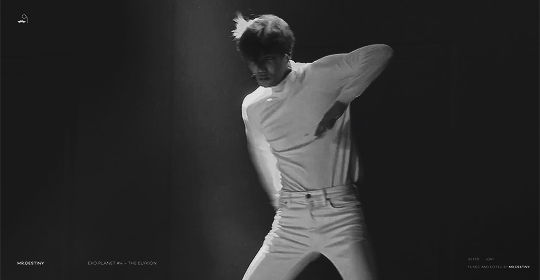
and he’s communicating it 100%, jongin’s dance is so interactive and raw, luring. i swear to god, put the seatbelts on for this one. it’s never just him, it’s you as well. you’ve never seen this before. he’s like “yes, i meant you, i’m looking at you”:
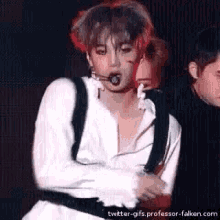
he’s even gonna modify the choreography to point right at you to underline that very thought. he’s so good, he can learn it, ace it, epitomize it, and do his own thing anyway. even the person in the last row will get whatever point kai wants to make. this is dance that belongs on the biggest stages.

even when he films without a crowd, it’s like you’re literally standing opposite to him. he focuses on two people: his moves, and the viewer. he has it look like you made him smile and self-aware, or you made him determined. INCREDIBLE. he shows his charisma, BUT he also shows your own (!) impact on him. it’s a duet. he wants you to join him on the dancefloor. this is from exo’s call me baby mv where kai does his famous come-hither:
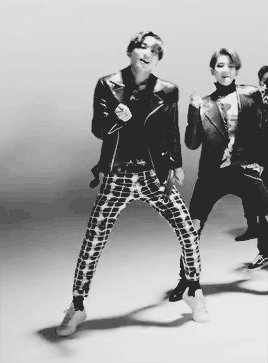
he flirts and he encourages. he values the audience and wants them to be confident as well. i think it’s the reason why he’s so outstanding and addictive, kai thinks beyond himself. it’s a tango he involves you in with his eyes and how he opens his body, interprets a lyric.



it’s not about imposing himself going one way. instead: he plays the back and forth ALL. THE. TIME. in any context. whether it be frivolous, or fun, or gloomy, or sweet. even with a simple little smiley wink it’s happening. and he acts like you had a reaction to it. there’s literally just a camera.

this guy’s physique, strength, elegance, feeling for the beat, character portrayal (!), and control is unbelievable. he’s destroyed it in every fancam out there. he can’t switch it off even if he tried. your eyes would go toward him in the largest group formation still. put him in the center, that’s his spot, he showcases it.

because he doesn’t just show learned moves, he makes it radiate something dynamic and animalistic (he embodies superm’s ‘tiger inside’ all the way).
jongin’s dance says: i love this, you love this, let’s do this, the feeling is right. he makes bodies and unrestrained touch the opposite of wrong, he pronounces it a source of having fun and being instinctual. and he never breaks the tie with you throughout, and uses his shoulders and lips to put the oomph into it.

he uses innuendo and a ‘we both know’ sentiment perfectly as an invitation rather than just going through his routine. that’s how he can make each move fascinating. you can tell kai knows exactly how to make everyone scream their lungs out. i bet somebody held their breath just reading this post already.
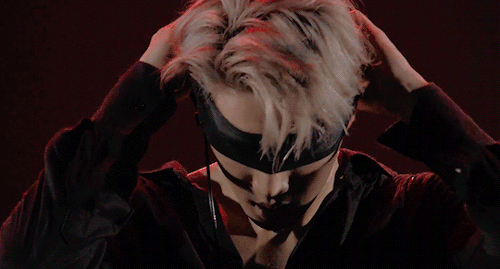
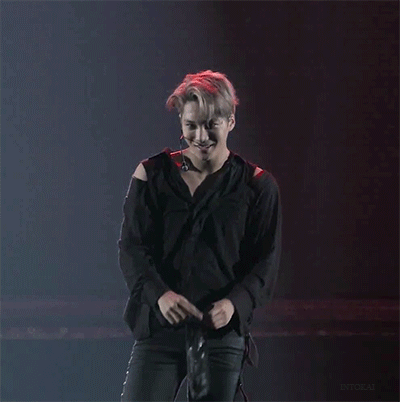
exo’s most famous choreo is ‘monster’ (kai focus linked) with good reason: jongin can turn himself into nothing short of a roaring beast. it’s one sharp, complex move after the other. kai can bend any gravitational law he wants to show any feeling and pose he wants. a glimpse:

now, how to spot him in general if you’re new to him? here are some pointers. kai’s execution is clean, fast, and powerful. those are two decades (!) of experience showing. kai is an all or nothing dancer, he plays no games. he treats every group and solo stage like his best and last. his work ethic is beyond words. yeah, he’s a capricorn. his style is direct as can be, working every axis.

as you can see, jongin is hard to overlook anyway: he’s a 182cm giant made of steel. he strives to acutely visualize impact in his style and it is always successful. in fact, it’s his signature. it’s like he creates invisible objects and pushes through them. boom, he just burst another bubble.
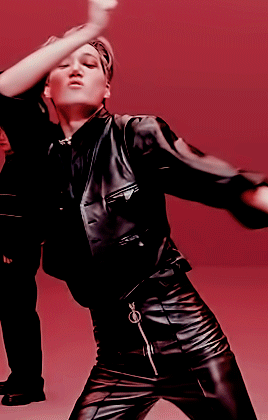
when the song gets to his part, i guarantee you won’t miss him and all the boldness and expression he brings to enrich the performance. hell... he carries it. jongin can handle the center, i’m telling you. (look how fast he rotates here)
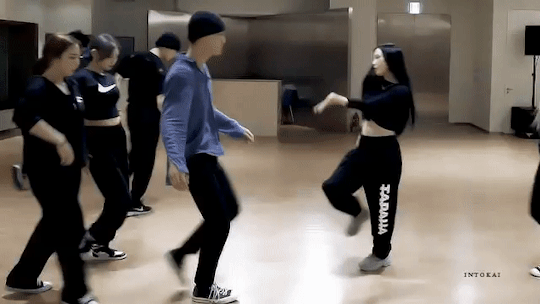
talking features — this is what to look for when he dances in a group setting: you can recognize kai’s face by how wide, bluntly structured and sensual it is. jongin is a sight. he has such an aura, serious, sultry, and smiling alike.
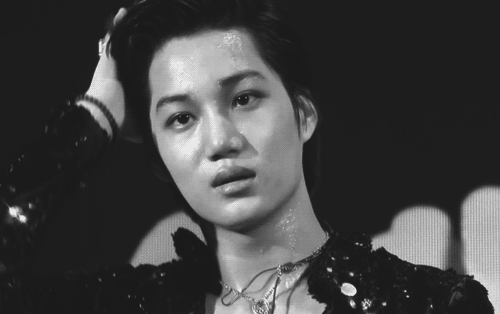
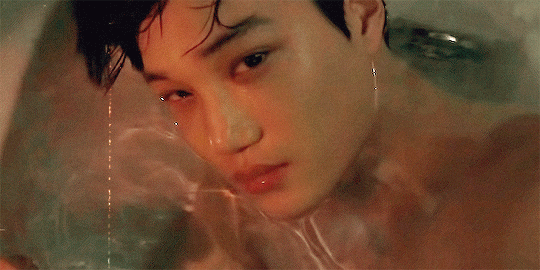

with a very recognizable silhouette (like... holy hell!):
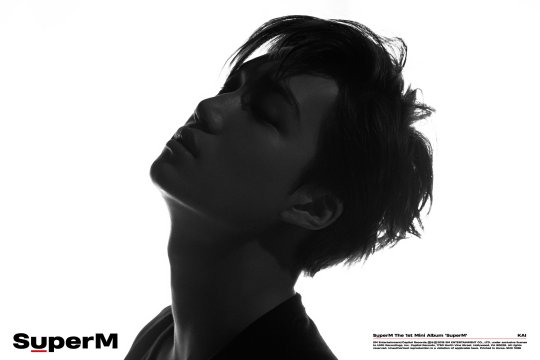

he’s very cute as well ♡ the fandom and kai himself have an adorable analogy going on. jongin calls himself a teddy/nini bear and we joined in on it. (i made a thread about it here, it talks more about his offstage life) — hence kai’s fans are called eri-gom, eris as in exo’s fanbase and gom meaning bear.

and i mean. look at him. what an attractive guy. he’s that handsome. strong brows, teddy eyes, square jaw, swept hair, glorious lips, tan skin.


now yes, something important concerning his appearance and a serious topic: i don’t want to list you the endless instances of colorism that kai has to endure but it has to be mentioned. jongin has been called every name in the book and people agonize him over his skin incessantly. it goes on and on and on. every day a new terrible comment about him emerges because some pitiful person thought it was funny and would elevate them.
he’s had to deflect, ignore, reframe, defend, remotivate, assert, harden, prove, denounce, and push himself, protect his confidence, decline skin bleaching constantly, laugh along, dance and practice thrice as hard to get the respect, and still see his dignity torn to pieces all day. i’ll just give it to you straight, that’s all fucked up. kai’s skin is perfect, he’s amazing and wonderful.

in his own words:



— exactly right. say it even louder.
having him at the bottom of every joke is weird and messed up. this man is an utter beauty and nothing has to be fixed. it is up to him to define himself rather than get called ugly for his skin’s appearance by default, and get whitewashed at every opportunity. it’s been going on for 27 years, he scrunitizes himself all the time and doesn’t look at himself fondly because he hears these beatdowns daily.

it’s heartbreaking that this happens literally with no end in sight (’kai is just a stripper!’... ‘he has bad vibes’... ‘darkest guy jongin!’). for his skin, and how he decides to show it, too. jesus christ his skin looks fantastic, end of debate. they just can’t handle him, kai couldn’t be any more immaculate.

♡

jongin has vigorously protected fans from discrimination, bullies, and shaming himself whenever it came up. in a very straightforward and deadpan manner because he knows exactly how it damages you. (”J” in the subtitles = jongin, he’s wearing the plain white top at the very back)
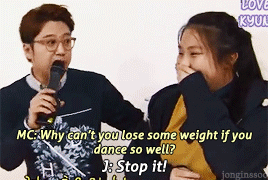

we need to protect and praise him that way right back. it’s important.
so, needless to say. all in for jongin getting the center stage he deserves. because he has the wow factor in every regard. kai usually opens an MV because there’s no better way to get people’s attention with that level of presence. with kai, you can’t go wrong. if you get the center in a an all star group like superm, you are the king.

being part of that presence, kai’s stage alter ego has reached levels of infamity you can’t even imagine. it’s great to see him being sovereign without apology.

and it doesn’t stop there. he shows time and again that acting, props, and commanding the audience has to be mastered to be an exceptional dancer. kai owns his sex appeal. sometimes, he even dances a portion of choreo with his eyes closed because he’s feeling it so much.
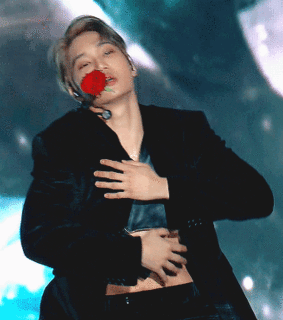
he is a pro in using his surroundings as well, superm’s stages are a glorious opportunity for kai to show how he comfortably ‘lives in’ the 3D space around him.
which makes the viewer do the same: watching kai makes you feel amazing, energized, but also serene and enjoying the moment.

there’s always balance. it’s the magic of it. e.g. he comes along with so much impetus and decisiveness but eventually, he halts to offer himself. here i am — take me. i’m yours. closed arms, open arms. walking, kneeling. looking down, looking up.

kai goes every extra mile there ever was and makes each eye contact count. involving the audience, one grin at a time. it works. it’s about establishing contact. he connects to the onlooker with so much nuance.
kai’s smirk is notorious and you can see why it’s so raw and real: he makes it linger. it’s such a duality since his dancing says i’ll come over, while his message is come and get me, i know what’s on your mind.
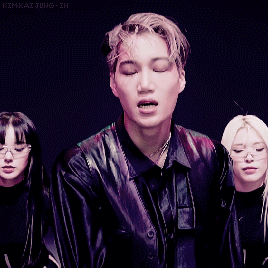
with a hilarious twist – kai expertly uses humor. you don’t get that in many dancer repertoires. i love it. all those quick expression changes. his smile! 😊 what a man.

so — what makes him so good and known: yes, his style doesn’t deny that dancing and eroticism are one in his business. that takes courage. kai has it. iconic performances have been his reward. point dance/killing part: exo’s love shot choreo.
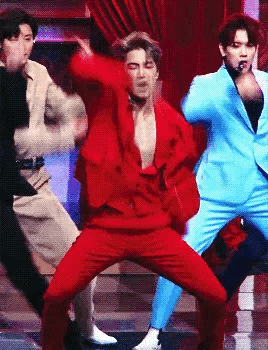
that suit has swept the nation. what’s more: kai shows you it’s more than just good hip movement that a good dancer needs. he does everything at once, he puts the pleasure on his face, all his limbs are following the template he chooses.
the thing is. kai couldn’t be any shyer, but when the music starts he becomes a oscar-winning madman. he emotes constantly (!) and stays in character. this is gold.

jongin always plays it up. he knows how to use that face and does a lot of power posing. this is how visceral looks like. he’s interpreted exo’s aggressive concepts to a T.


and he has so. much. fun. it propels him. on every beat.

past every hurt, heartbreak and injury, man. if you know about his genre you knew this was coming, kai does all of that with 4 herniated discs. since debut days, never recovered. every gif in this thread, he dances with a battered spine. wheelchairs, stage collapses, relapse-recovery-schedule tales, the dilemma of injuries being inevitable, limping, kai falling into depression during breaks, constant pain killers, countless tears on stage, we’ve seen it all, the extreme end of it.
kai works out like hell to literally keep his body from falling apart. but it doesn’t help the nerves in his back that are impacted. doing choreo you can sometimes literally see the pain kicking in and he pulls himself through with force for the last minute. once you know how strained his back is, you can see it.
at the end his expression goes fuck now it’s coming when the adrenaline fades. he takes every second-pause he gets to rest but still finishes each move. even when he holds back, he keeps it together and executes each turn. sometimes, he has to restrict himself and soften his movements to protect his health (especially in hard choreographies such as lucky one which is universally disliked by exo — still jongin makes the very best of it smiling bright and dancing so hard his sleeves come off).
he frequently states he ‘dances in any case unless his legs are affected by something’. all torso injuries are fair game, this guy is hardcore. and people claim he’s just pretending. chen (a fellow exo member) says not a single part of jongin’s body is intact. he has paid every price to get this far to follow his love. he’ll step on stage with crutches. he works SO HARD.

that being said: exo being called the official nation’s group, i say kai is the nation’s dancer. period. he has had his great moment at the korean olympics flawlessly dancing in a hanbok with traditional instruments and fulfilling his dream.
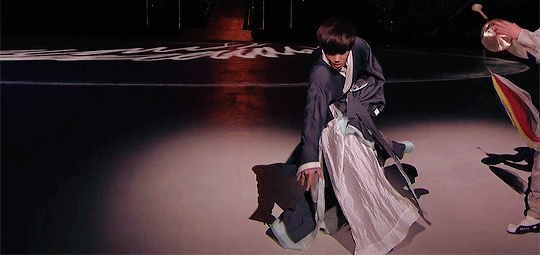
i love the tension and drama he can bring. he can also thrill with slow, vulnerable movements alike.

kai’s is called a legend, he’s all that and even more. the facial expressions alone are feared by any kai stan because they hit home.

this guy is a sex icon and goes off like a gun, messing around was never kai’s incentive.
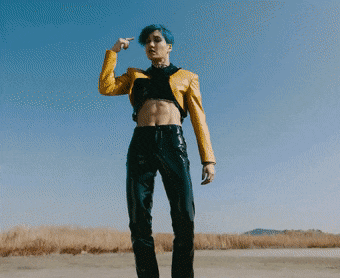
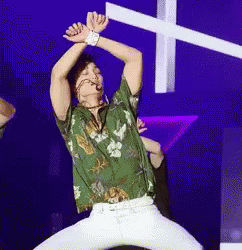
while at the same time being incredibly nuanced and so, so descriptive with his movements.
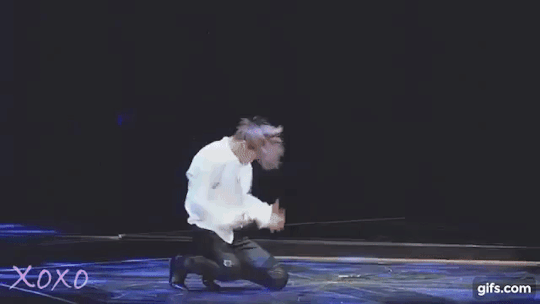
point dance: baby don’t cry. yep, kai has danced in water. must-watch.

this man loves what he is doing. he said he wouldn’t regret to die on stage because dancing is his destiny. boy, it shows. this guy has found his purpose. he can tell any story he wants. he’s a complete artist.

he’s perfectly portraying his incentive and he couldn’t look any more like a god on earth.

long story short, kai is dance and motivation goals. if you dance professionally, you can easily look toward him for the right words.
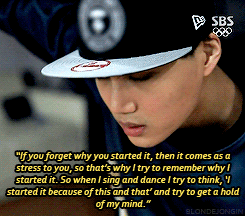
if you want to further your study and knowledge: he released a self-titled solo album recently. highly recommended. he worked forever on it, and he’s really dishing it on there. you get to hear his soft voice plus sizzling footwork. and he isn’t even getting started yet. you’ll hear from kai, i promise. he constantly achieves new levels of artistic perfection.
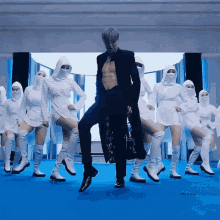
a last remark. jongin is amazing for a myriad of reasons that go beyond what i show you here given the post focuses on his work on stage. but the point stands, while other people have tried to break him, he broke through every barricade instead and stood up for himself. we can be extremely happy to have him and witnessing his unreal dance is an exceptional pleasure. here’s to jongin continuing his passion and confidence, healing, and getting the sweeping respect and acknowledgement that is his.

#kai#kim jongin#jongin#super m#exo#exo introduction#superm introduction#introduction posts#kim kai#erigom#ask#bulletproofgucci#cub mail 🐆#dance#dance analysis#flashing tw#injury tw#colorism tw#kai masterpost#long post#kai thread#exo thread#superm thread#jongin thread#jongin dance analysis
121 notes
·
View notes
Photo










Pitchfork Music Festival - Chicago 2021
Horsegirl - New band from Chicago; Nora Cheng, Gigi Reece and Penelope Lowenstein. They have just a few singles out and apparently working toward releasing album. They are a Noise-Rock band influenced by Kim Gordon and Yo La Tengo. I like the singles so far. Their performance was generally good, but a little too much bass tone kind of drowned out the vocals. During their set, Penelope mentioned that she grew up going to Pitchfork with her parents and started going when she was young enough to be admitted for free.
Bartees Strange – Very enjoyable set. His music crosses over Rock, Jazz, and Hip Hop. He has a nice voice and seems like a cool guy. He commented a couple of times that playing at Pitchfork has always been his dream.
Maxo Kream – This was my only Blue Stage visit. The Blue Stage is a smaller area than the Green and Red stages and the one offering the most shade. I really came to chill in the shade for a bit. Maxo Kream’s music is standard Hip Hop. He was entertaining and engaging with the crowd.
Amaarae – I listened to one of her LPs prior to the festival. It was OK but I wasn’t sold on her little-girl sounding voice. However, I did really enjoy her set at Pitchfork. Very nice mix of her vocals with a male back up singer. He music is a mix of R&B, Soul and Afro Fusion. Very sweet personality and very engaging with the audience.
Waxahatchee – I saw Waxahatchee once before at the Triple Rock Social Club in Minneapolis, just a few months before the owners decided to close the business. I do listen to her albums occasionally and seeing her again reminded me of how much I enjoy her music and voice. She played an awesome set which made me want to take a deeper dive into her album catalog.
Ty Segall and The Freedom Band – One of my favorite artists who I have never seen live, so I was really looking forward to his set. Ty and the band were everything I thought they would be. Loud, hard driving guitar-based music. They rocked Pitchfork Festival to its foundation.
Kim Gordon – Another artist I really looked forward to seeing. I never got to see Sonic Youth. (I did see Thurston Moore at Riot Fest a few years ago.) Her 2019 album, No Home Record, was her first ever solo album and it is a fine Noise-Rock LP. Her set was straight-up Noise-Rock, which was a great follow up to Ty Segall’s Hard Rock. And she looked great in her black (skirt or culottes) and white blouse.
Angel Olsen – I am not 100% sold on Angel Olsen. I think she makes fine music, but it just doesn’t quite click with me. I started listening to her a few years ago after reading an interview with Liz Phair who said she really likes Angel Olsen and that her latest album sounded like The Beatles. I’m not quite sure from what musical perspective Liz was considering, but for me, I think Liz oversold it. I did, however, chill for this set and it was a nice listen. Her last song was a duet with Sharon Van Etten. They sounded great together.
St. Vincent – What a great show! The other time I saw St. Vincent was in the intimate Egyptian Room in Indianapolis in 2017 during the Masseduction tour. It was just St. Vincent by herself, singing and playing guitar to a backing track. This time, touring her latest album, Daddy’s Home, she had a full band and three soulful back-up singers. Having a live band really added some punch to her set and St. Vincent had some fine moments shredding her guitar. Her voice sounded great, and her slower songs had me enraptured. I can’t say enough about St. Vincent as a creative artist. She never dials it in. Every album and tour are unique both musically and stylistically. She clearly works hard at her art and at least for me, never disappoints.
Missed – Georgia Anne Muldrow – I would have liked to see this artist. I listened to her album VWETO III and found it to be excellent. Unfortunately, she was on at the same time as Ty Segall, so I will have to try and catch her show another time.
(Photos: All the professional looking close-up photos, unless otherwise noted, are from this website: https://illinoisentertainer.com/ All the crappy socially distanced photos are from me.)
#pitchfork music festival#union park#chicago#st vincent#angel olsen#kim gordon#ty segall#waxahatchee#amaarae#maxo kream#bartees strange#horsegirl#i love live music
2 notes
·
View notes
Text
I want to briefly talk bluegrass fashion.
I appreciate and enjoy bluegrass from its roots to its present. I think creative growth over the decades has allowed for incredible and diverse music. Whether it’s disco influenced jamming, rock-bluegrass fusions, or classical music inspiration, there’s cool stuff to be had anywhere in the timeline. That said, one thing I wish contemporary bluegrass bands did more of was take fashion tips from the first generation bands.
In the 1920s, barn dance type radio programs featuring hillbilly music and rural style entertainment became popular. Some of these radio shows like the WLS National Barn Dance and WSM Grand Ole Opry had stage shows where you could watch the program in person. Costuming and presentation of the performing cast tended to be rough rube depictions, even caricatures, of rural people. George D. Hay, who founded and hosted the Grand Ole Opry, himself named the bands things like “The Gully Jumpers” and “The Possum Hunters.”

But when Bill Monroe and his Blue Grass Boys auditioned and were made members of the Grand Ole Opry in October 1939, Monroe detested this rough presentation that could quickly engender degrading opinions of hillbilly stereotypes. He opted instead to dress in a more classy manner. His band came out in white shirts, ties, jodhpurs, and boots.
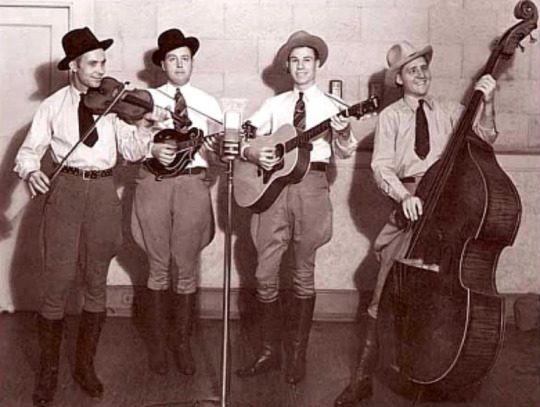
This is something Bill Monroe bragged about even as the decades went on. For Monroe, it was important to dress well and in dignity when you got onstage. You respect yourself and you respect audiences when you come out in your best.
By the mid-1940s Bill Monroe’s band had accumulated a number of musical features that today our ears would recognize as bluegrass. It’s interesting to notice that bandmembers who left Monroe and went on to do their own bluegrass music often... took with them some of Bill’s ideas about stage presentation. Flatt & Scruggs, when they left Monroe and started their own band, are sometimes seen in early images wearing jodhpurs.
Early bluegrass bands on occasion might have had an “exception” to the rule. At the very least, you see this in Flatt & Scruggs in the late 1940s and first half of the 1950s. But I believe what they were doing reflected a trend that existed in the broader hillbilly music industry. I’d like investigate that more later to understand better. Unlike today’s concerts that involve music and only music, in those times, comedy was a more expected part of a show. White banjo performers, prior to bluegrass, were essentially all comedians; and in ensembles, someone (as I’ve often seen, the bass player) might take a comedy role. So you could’ve gotten a well-dressed band... and then the bassist dressed in comic rube garb.

That said, each first generation bluegrass band ended up creating their own unique presentation. It’s variation around a theme: dress up nice to respect audiences and put your best foot forward. How you present yourself onstage has impact. Audiences aren’t coming out to see some tattered everyday person; they’re coming out here to listen to music stars.
And so you see bands and acts coordinating their outfits in classy ways like...
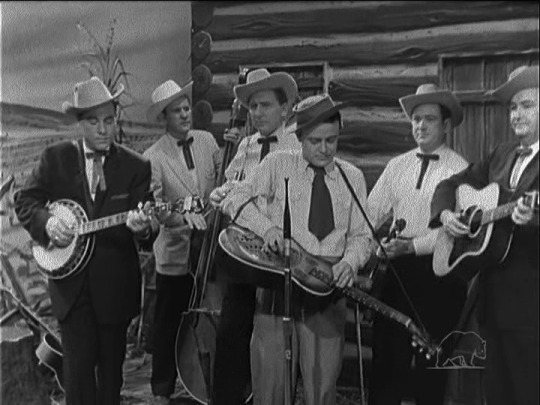
(The 1958 screencap above doesn’t 100% evoke this, but I’ve noticed Flatt & Scruggs in the mid-50s through mid-60s would often do a 2-2-2 coordination. Everyone would wear hats. The band leaders would wear matching jackets and string ties. Two band members would wear the same collared shirts and the same string ties as the leaders. The last two band members, who were a duet and comedy team, would wear vests or different hats or some other distinguishing marker. Everyone’s clothes would carry the same overall color theme. Very well-thought out wardrobe presentation.)
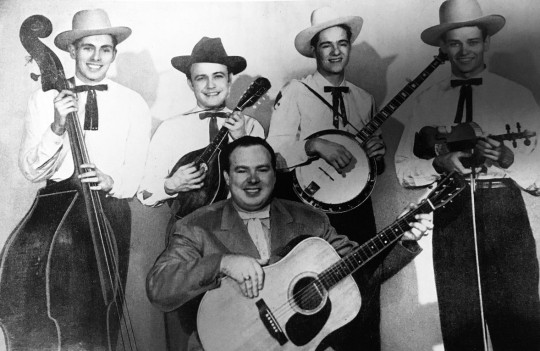


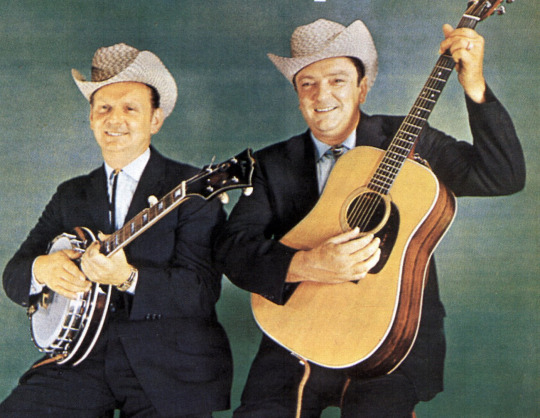

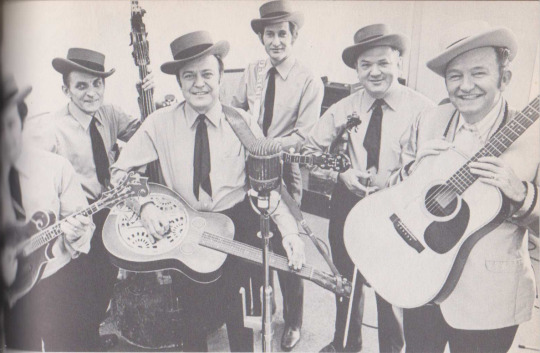
SEE? EVERYONE IS DRESSED UP AND LOOKS GOOD.
You can tell they’re an act. You can tell they’re professional. You can tell, the second they step up to perform, they mean business. It helps elevate them into STARS.
As new generations took up bluegrass, the social context of how to dress changed. The Folk Revival of the 1960s brought many Northerners, urban people, and hippies into the bluegrass world. I haven’t read up as much on this part of bluegrass history, but I believe it was starting here that new bluegrass ensembles quit thinking about dressing up to be onstage. I’ve certainly seen photos of the early bluegrass festivals of the late 60s and 70s, and some second generation bluegrass groups would wear extremely casual things onstage. Other groups would coordinate by wearing the same collared shirt, which meant they were matching, but also (to me) making less of a “statement.”
It makes sense. First generation bluegrass performers were seeking to dress to impress and get away from crappy hillbilly stereotypes. Later generations of bluegrass performers might not have been from the South or a country lifestyle at all, and would feel more inclined to try to evoke a “working class” vibe by wearing everyday or ragged clothing. Today, I feel many bands do this to evoke their own form of an authentic stage presentation.
This means that today, many groups wear rather casual clothing. I feel I see this especially in jamgrass. And for the record, these are all VERY talented, well-known ensembles; I’m not comparing pros to locals or something.


And they’re dressed better here than what I’ve seen for bands at concerts.
I think it’s ironic that Bill Monroe, the Father of Bluegrass, sought to escape tattered clothing that actual country people wouldn’t wear on the fields, let alone onstage... only to have bluegrass musicians half a century later revert to costuming concepts Monroe had rejected. Today’s clothes of course aren’t the torn-up straw hat and single-strapped overalls of the early Opry, but it’s the same idea: dress down to look “country.” I don’t think there’s any objective disrespect to bluegrass’s history to dress like that, but I do think there’s a point that everyday clothes don’t make as much of an impression for your band.
Now of course not all groups have gone this route. In any generation of bluegrass, you still see bands that dressed more “traditionally.” But it’s certainly been a trend—since at least the 70s—to see bluegrass groups, either at the local or professional level, wearing everyday clothes. Get jeans, maybe some flannel, and you’re good to go. I see it oh-so-often now.
It doesn’t resonate as much to me. I get the point of their presentation, trying to evoke a casual non-mainstream working class image, but I feel there’s other ways you can set a vibe for your ensemble that doesn’t come off as lazy, everyday, or unnoticeable.
I’d be much more interested seeing:

YEAH!!!!! YOU GO RHONDA VINCENT AND THE RAGE!
I think it’s interesting to see this mindset about proper bluegrass performance attire recur in interviews. I’ve watched a number of 2000s and 2010s interviews for first and early second generation bluegrass performers, and one common thing the old-timers complain about is how people don’t dress up anymore. They feel it doesn’t respect the audience or make a good impression for the ensemble. How you present yourself onstage is half of the performance; it can be an effective means of enhancing a show when you do it well.
And I’ve seen it in conversations with people like Steve Martin, showing how in the 2010s, there’s still negative “hillbilly” images to butt against:
INTERVIEWER: Does it bother you that quite possibly the most famous banjo song in pop culture is "Dueling Banjos" from "Deliverance"?
MARTIN: It doesn't bother me at all. Actually I might argue with that because another most famous song would be the theme from "The Beverly Hillbillies" or "Foggy Mountain Breakdown," the song from "Bonnie and Clyde." So there are a couple of 'most famous' banjo songs.
INTERVIEWER: But still… the theme song from "The Beverly Hillbillies"?
MARTIN: It's just something we have to face. And everything changes. That's why I always wear a suit and tie when I play bluegrass.
INTERVIEWER: Do you feel like you're helping changing the face of bluegrass?
MARTIN: I don't know. That's what I do when I go on stage. I don't make hillbilly jokes or things like that. I'm just playing it as the person I am, not pretending to be anything else. The band I play with, we all dress in suits and ties.
One of my favorite contemporary bands also has one of my favorite wardrobes. What they choose to wear is a huge element of their stage presentation, amplifies their show powerfully, and contributes to the entire vibe of their music product. Good costuming can be part of marketing, and they market themselves spectacularly.
The Dead South almost marries the best of both worlds between “dress up” and “dress as the everyday man.” Their clothes aren’t “formal” in the sense of suits and ties. There’s more casualness to it. At the same time, what they wear—blatantly Southern and Western gear that matches with variation across the band—isn’t something everyday Joe or Janet would put on to go to Walmart. It’s got a little more of a “period” feel to it while also being modern enough to feel authentic. Altogether, it makes them classy without being formally classy.
It’s perfect for them. This is a “controversially” bluegrass band who knows that, while they play string band music, its creative reach extends beyond what you’d expect of something labeled “bluegrass.” They have called themselves “a rock band without a drummer, a bluegrass band without a fiddler.” Elsewhere, they’ve marketed themselves as “a gold rush vibing four-piece acoustic set from Saskatchewan [that] infuse[s] the genre's traditional trappings with an air of frontier recklessness, whiskey breakfasts and grizzled tin-pan showmanship.” This is a band I’ve always said plays to a “degenerate” image, songs filled with cowboy shootouts, barfights, gun-wielding robberies, alcoholic nights, and more.

And doesn’t their wardrobe evoke that spotlessly? There is CLASS and INTENTION with how they present themselves, to the point the band almost always stands in that order left-to-right, and has used their unique wardrobe choices for album covers and stage design.
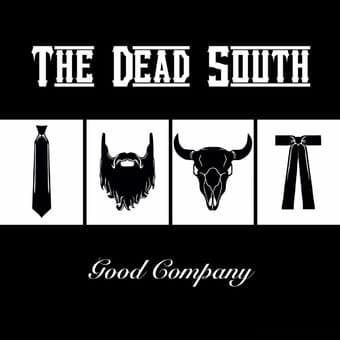
Check out how the stage’s stained glass window lights behind them evoke both images from their songs, and have the tie, beard, skull, string tie theme on them. Every band member stands in front of his respective window.

That is *WAY* cooler, more effective, more impacting, more resonating, more memorable, more vibing, than simply tossing on my latest t-shirt.
(And yes, the last photos are from when I went to their concert last year. One of the best concerts I’ve EVER been to, and it’s because they knew how to put on a SHOW.)

Performance entails everything from the sounds you make to the personality you evoke to the clothes you wear. It’s why I prefer the first generation bluegrass bands’ approach to “dress well” over some modern string band trends. And again, bands like The Dead South show alternate ways you can dress up and rock out.
#long post#that banjo business#thatbanjobusiness#Country Music History#Haddock Deep Dives#General Banjo Business#The Dead South#Bill Monroe#daddy boi billiam#Flatt & Scruggs#bluegrass#first gen bluegrass
27 notes
·
View notes
Text
FusionFall Headcanons: Grim
As necessary as setting up the Resurrect ‘Ems was and despite how his spa business boomed after the fact, Grim was still pretty reluctant about using them at first--not just because it goes completely against his job as the Reaper, but because he’s seen what this sort of thing can do to people. Mortals live and die: It’s a natural cycle, and those who go against it often suffer heavy consequences. Still, any underworlder or supernatural dealing with the souls of the living could see how the war with Planet Fusion was basically a rigged game, since fusions/fusion monsters could respawn in-mass whereas Earth’s forces would ultimately be overwhelmed. To save the planet, they had to even the playing field. Grim’s just glad he’s not the one having to deal with all the paperwork regarding which mortals are safe from reaping and which aren’t.
Once the Resurrect ‘Ems were set, there actually wasn’t too much work Grim had to do afterward. The only thing he sometimes has to keep an eye out for is if a soul somehow goes missing. While rare, the Resurrect ‘Ems still aren’t a 100% guarantee for survival. There are several beings who would eagerly capture a mortal soul if given the chance, so the part of Grim’s responsibilities that focuses on locating and protecting them has taken a bigger focus than in the past.
Even after the events of the “A Fusion in our Midst” mission arc, his reception among people tends to be lukewarm at best. The rumors about him being a possible traitor were hard to squish, but he’s also still the embodiment of death. Fusion Fighters might be safe from his scythe for now, but there’s no promise of safety for when the war is over. As such, people will naturally keep their distance for “professional reasons.” It’s probably not best to get too comfortable around him simply due to hard feelings later. Grim’s used to it at this point though, so he doesn’t really mind beyond uttering a complaint here or there. He prefers tormenting the people around him with the occasional, ominous comment anyway--reminding them of their inevitable suffering/death at some point or another.
Normally, he won’t fight off fusions/monsters unless it’s personal. He’s done his job and it’s bad enough people keep bothering him during his vacation. If you’re stuck in Orchid Bay, fighting for your life against a wave of Tentakillers, and call to him for help, don’t expect him to. More likely, he’ll pull up a lawn chair with some popcorn and enjoy the show.
The Grim Reaper doesn’t often get much of a vacation just because it’s not like people stop dying or there’s a real substitute for him. He can only flex his schedule around so much. So, if it seems like his vacation is going on for forever, it’s because he kinda keeps...extending it. For one, use of the Resurrect ‘Ems has really shortened his quota and, since Billy and Mandy are both doing their own things in the war effort and calling him for whatever they want less often, he’s taking full-advantage of the time away from them--especially since he feels like he’s never completely allowed to enjoy the time off as it is. However, it doesn’t stop Billy from phoning him regularly whether it’s over the most random, benign thing he pulled out of his head or just to check in.
Part of Grim’s in-game dialogue is a simple greeting, welcoming new players to Orchid Bay. While this isn’t much, it can hint to two things: First, that Grim does try to maintain at least some civility despite how other treat him and his own mean streak, and second, that he might actually play an active role in the area--possibly with some authority. (I make the latter point because a greeting like that isn’t common for someone to make if they’re just a vacationer: You would only really welcome someone to a place if you yourself held some footing/felt at home enough there. This seems to be a situation more along the lines of how you would welcome a new employee to your team or, in this case, fellow Fusion Fighter.) While Grim of course is head over the Resurrect ‘Ems, I think his influence in Orchid Bay in-particular may have something to do with the area’s population of supernatural beings--who would heed Grim’s instructions as a famous figurehead and someone with as important a role to the war effort as he does.
While Grim’s uncertain of any nano with a revive ability--as he views it as a way of cheating death potentially beyond what was agreed when he made the Resurrect ‘Ems--he’s particularly wary of the nanos modeled after himself. He’s bound to have noticed that their IE Donors have a much stronger affection toward the little doppelgangers than they’d ever show him, but he’s more concerned about the consequences those bonds might to lead to if they win the war and life--and its cycle--returns to normal. There’s a strong possibility the nanos would interfere with his job to protect their companions, and their similar abilities to himself could be a challenge. He’s wary of other demonic-based nanos for similar reasons.
9 notes
·
View notes
Photo

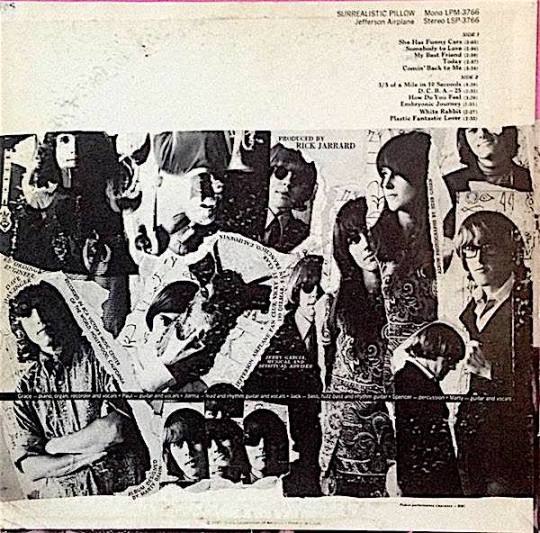
Jefferson Airplane -Surrealistic Pillow
The release of Surrealistic Pillow, Jefferson Airplane’s second album, coincided with so many new things going on in the world of music, and the world in general. It brought national attention to the psychedelic music scene flourishing in a drug-infused counterculture of Summer of Love San Francisco that had its’ roots in the ‘50s beat scene. The record came out two months before the release of the band’s first hit single, Somebody to Love (b/w She Has Funny Cars, and nearly two months before the next one, White Rabbit (b/w Plastic Fantastic Lover. The actual first single RCA chose to issue from the album was My Best Friend written by Skip Spence (b/w How Do You Feel). It failed to break into the Billboard Hot 100, cresting at No.103. Both Spence and former lead female singer Signe Anderson had departed in 1966 and veteran drummer Spencer Dryden had come aboard along with Grace Slick, formerly of another San Francisco band The Great Society, several months later. Slick brought along the two songs that became huge hits for The Airplane. Somebody To Love, written by her brother-in-law at the time, Darby Slick, had been performed and recorded by The Great Society as Someone To Love. Slick was the composer of White Rabbit early on in the Great Society’s existence. In August 1966, a few months prior to Grace Slick joining Jefferson Airplane, the band fired manager Matthew Katz. A protracted precedent-setting artist-management legal battle ensued over the terms of their contracts, which lasted two decades. Marty Balin’s roommate and friend, Bill Thompson, was their road manager and filled in as band manager for awhile. As Surrealistic Pillow was about to be released, Jefferson Airplane became managed by Bill Graham which lead to their first time on the East Coast. Along with the Grateful Dead and Quicksilver Messenger Service they co-headlined the Human Be-In at Golden Gate Park on January 14, 1967.
The recording of the album took place November 1966 at RCA studios in Los Angeles, not long after Grace had joined the band. The span of dates actually goes from Oct. 31 to Nov. 22, but the band spent less than two weeks in the studio total. There are various takes on how the process went with RCA staff producer Rick Jarrard, but suffice it to say that the band members were not overly happy working with him despite the results or perhaps, in their minds, because of the results. It is noted on the liner notes on the album that Jerry Garcia was the Musical and Spiritual Adviser. There is disparity as to what influence he may have had over the recording. Producer Rick Jarrard denied that Jerry had any presence on any of the tracks. This has been countered by band members, and Jerry himself said in a 1967 interview that he played guitar on three tracks, the high lead on Today, and also Comin’ Back to You and Plastic Fantastic Lover, plus he rearranged Somebody to Love. In his book, Been So Long: My Life and Music, Jorma Kaukonen wrote, "I used to think about him as co-producer, but now that I really know what a producer is, the producer of that record was Rick Jarrard. Jerry was a combination arranger, musician, and sage counsel.” Reportedly Garcia was also the inspiration of the album name with his comment, “as surrealistic as a pillow is soft”, according to two sources, Light into Ashes-Grateful Dead Guide: Jerry Garcia & Surrealistic Pillow, and JGMF-Jerry Garcia’s Middle Finger: Jerry on Jefferson Airplane, Surrealistic Pillow.
Released February 1, 1967, the album went as high as No.3 on the Billboard Top 200 while being on the chart for over a year. It was awarded a Gold Record for over a million sold (eventually certified Platinum) and is ranked 146 on the Rolling Stone list of 500 Greatest Albums of All Time. Somebody to Love hit No..5 and White Rabbit No.8 on the Billboard Hot 100. Both songs are in Rolling Stones list of 500 Greatest Songs of All Time, Somebody to Love at 274 and White Rabbit at 478. The B-side of White Rabbit, Plastic Fantastic Lover, received extensive airplay in the San Francisco Bay Area and perhaps other markets as well. Jorma Kaukonen’s guitar instrumental, Embryonic Journey, also got some airplay in the Bay Area and was performed on at least one network television show. The Airplane also benefited from being on TV shows such as The Tonight Show Starring Johnny Carson, The Ed Sullivan Show, and The Smothers Brothers Comedy Hour. Jefferson Airplane became a national and international phenomenon, thanks in part to the influence of music critic Ralph J. Gleason, The Airplane was invited to play at the first major rock festival, Monterey Pop in June 1967, just prior to the White Rabbit release. Surrealistic Pillow was, as Allmusic reviewer Bruce Eder put it, “…a groundbreaking piece of folk-rock-based psychedelia, and it hit like a shot heard round the world”. It was considered original for its; time, and the band’s fusion of folk rock and psychedelia lined up with pioneering musical directions of The Byrds, The Beatles, The Yardbirds, Bob Dylan, and The Mamas and the Papas.
The songwriting for the album was spread out amonst five of the band members, the result of which was, as Bruce Eder puts it, “resplendent in a happy balance of all of these creative elements”. She Has Funny Cars, written by Marty Balin and Jorma Kaukonen, starts with a rhythm and blues based Bo Diddley Beat, and goes on to highlight the new harmony magic of Marty and Grace Slick. The song expresses the materialism in American Society, but the title has been attributed to Spencer Dryden’s girlfriend’s “funny car(s)”. The next two songs on the album were written by other local musicians that the band had been associated with. Somebody To Love was written by Darby Slick, Grace’s brother-in-was at the time, and it was released as a single by their band The Great Society, under the name Someone To Love. With Grace’s decision to join Jefferson Airplane at Jack Casady’s suggestion, The Great Society band came to an end. While Grace’s presentation of Somebody (Someone) To Love with them was more subdued, in the Jefferson Airplane version “she sounds far more accusatory and menacing”, per SongFacts. My Best Friend was a nod to the Airplane’s folk rock beginnings, and in some ways had the type of harmonies reminiscent of The Mamas and Papas, and before that, Peter, Paul and Mary. It was composed by former drummer Skip Spence, who had left to form Moby Grape. The two tracks that close out side one are ballads written by by Marty Balin with Jack Kantner co-writing the first one, Today. Balin said that he was inspired to write Today while being in a recording studio next to one where Tony Bennett was recording. He had thought to write the song for Tony in hopes that he might meet him and give it to him. This never happened and it ended up being one of the Airplane’s most beautiful songs. Another lovely song, Comin’ Back to Me, which features Grace Slick on recorder, was written by Balin in one sitting, afterwards going right to the studio to record it with any available musicians. It has been included on soundtracks of several American feature films. 3/5 of Mile in Ten Seconds is a psychedelic blues-rocker that sheds light on the vibrant, drug-drenched San Francisco scene of 1966 while “there is a sense of reflection in some of the lines”, per Matthew Greenwald’s Allmusic song review. D.C.B.A.-25. The title is pretty simple, the letters are for chords in the song, and -25 comes from LSD-25. Paul Kantner composed it. A true sign of the times. The next song is the only one on the album written by someone not connected to the band in some way. Tom Mastin is the composer of How Do You Feel, which is similar to My Best Friend in that it is a folk-rock number with shades of The Mamas and The Papas in the vocalization. Like Comin’ Back to You, it also features Grace Slick on recorder in addition to her vocal harmonies. Little is known about Tom Mastin. Grace Slick had merely said that he was a friend of the band according to Barbara Rowes' biography of Slick. There is some light shed on him in a biography on the Brewer and Shipley website. Michael Brewer met Tom Mastin in Kent, Ohio in 1964, playing in a local club together, and they decided to check the scene out in San Francisco. Perhaps this is when he met up with local musicians at a time when bands like Jefferson Airplane and The Great Society were forming. After a brief stay Mastin and Brewer headed for Los Angeles to meet up with some friends. They ended up recording a three-song demo produced by Barry Friedman (later known as Mohawk Frazier), and Columbia Records offered a contract for them to record as Mastin & Brewer. As they, and two other band members added to the group, were preparing to record, Mastin walked away from the band. He is said to have suffered severe bouts of depression and eventually committed suicide in the ‘90s. The single was actually completed when Brewer recruited his brother Keith to perform Mastin’s vocals and Columbia released the Brewer & Brewer record, which attracted little attention. As already noted, Grace Slick had already written White Rabbit, but the first studio recording of it occurred shortly after she joined Jefferson Airplane. The thinly disguised references to psychedelic drugs meant it was banned in some markets, but it still managed a high position on the charts. It was not included on the U.K. version of the album and the released single there only reached No.94 on the UK Singles Chart. Marty Balin wrote the final cut on the album, Plastic Fantastic Lover, after spending time in a Los Angeles hotel watching television. It is his somewhat sarcastic viewpoint about how much people watch the medium, all done in a blues-rock style with the influence of James Brown/funk.
This one finally hit close to home for me. It was my first San Francisco "sound", Summer of Love record. It is also one of my all-time favorite records, as I’m sure it is with many other folks. It wasn't too hard to be attracted to The Airplane's music, what with first one big hit, and then another, riding the airwaves. They weren't new songs to the SF music scene, but soon the whole world was paying attention. Somebody To Love and White Rabbit were and still are catchy tunes that spoke to a generation. New generations are still tuning in. A young singer songwriter I know, Lisa Azzolino, covers White Rabbit. It is undoubtedly the most remarkable version I've heard since Grace Slick held forth with it back in the day. I remember being struck by some of the song titles and the band’s appearance. It was pretty foreign to me and quite fascinating. The album itself was likely something I might have bought even if I hadn’t heard Somebody To Love. I even went so far as to buy the 45rpm of White Rabbit and Plastic Fantastic Lover. I’m pretty sure I got it because it was played so early in the Bay Area and hadn’t risen to hit status as yet. As time went by, Bay Area Top 40 stations were playing not only the two huge hits, but Plastic Fantastic Lover (which was on the single), Today, and even Embryonic Journey as well. The one song on the album that didn’t do much for me was My Best Friend. Perhaps it was too “folksy” for me, or seemed a bit “country”, but as time went on it started sticking in my head more and more. I even realized that it would just pop into my personal play list and I would be singing it to myself, probably as much or more as Somebody To Love, or Today. I never heard the single version on the radio though.
As I was researching information for this the name Matthew Katz stood out to me immediately. I’ve been familiar with it for a long time. primarily because of his likewise unscrupulous management associations with Moby Grape and It’s A Beautiful Day. I have friends involved in both bands and have heard some horror stories directly from them which include, among other things, “legal” control of publishing, and even the names of the bands. He refused to let go of these things and took advantage of them as much as he could without ever considering renegotiation. The fact that his legal wranglings with Jefferson Airplane has had a major impact on how artist-management arrangements are being handled since those days is gratifying to say the least.
I never got to see Jefferson Airplane in person, but I have seen Starship and a later version of Jefferson Starship. I saw the latter at Marin County Center one night. I recall that Paul Kantner was there on rhythm guitar, and Marty Balin sang a handful of his great songs, including some Jefferson Airplane favorites. It was special that Signe Anderson came out and sang a few songs which included her joining with Marty on Its No Secret. I had an opportunity to go to Monterey Pop because I had just spent a week in Pacific Grove that year and a friend who lived there invited me down for this festival that was happening a week or two after I was there. The problem was I didn’t have a way down and I didn’t really know how to approach such a thing with my parents. Ah well, nothing too much happened there, right? And the Bay Area connection was special in more ways than one. Grace Slick nee Wing attended my alma mater Palo Alto High School, but switched to the private all-girls Castilleja High School, also in Palo Alto. I estimate she started Paly 14 or 15 years before I did, which meant I hadn’t arrived in town yet. Paul Kantner, born in San Francisco, was sent to a catholic military boarding school by his father after his mother died when he was eight years old. He graduated from St. Mary’s College High School in Berkeley in 1959, also before I moved to California, but ten years before I graduated from Paly High. To think, a religious military school. Paul puts it best in regard to his experience of being forced to be at St. Joseph’s Military Academy in Belmont CA: “I was an abandoned little child. The school was out of necessity, (his 61-year old salesman father couldn’t raise him on his own) but still rather drastic. Nuns and guns. As a result, I now fear nothing.”
https://www.allmusic.com/artist/jefferson-airplane-mn0000840102/biography
https://www.allmusic.com/album/surrealistic-pillow-mw0000591676
https://www.rollingstone.com/music/music-album-reviews/surrealistic-pillow-251704/
https://books.google.com/books?id=TKyYNB0pGIoC&pg=PA15&lpg=PA15&dq=paul+kantner+saint+mary%27s+college+high+school+graduate&source=bl&ots=qa5ymlMsuE&sig=ACfU3U2fe1iOMB1NLVQgq0h-HTapXX4Ukw&hl=en&sa=X&ved=2ahUKEwizipu0yqrpAhUHKKwKHZPdAYwQ6AEwAnoECAoQAQ#v=onepage&q=paul%20kantner%20saint%20mary's%20college%20high%20school%20graduate&f=false
Somebody to Love http://www.songfacts.com/detail.php?id=1251
https://www.amazon.com/best-friend-how-feel-single/dp/B007A6SAGI
https://www.allmusic.com/song/3-5-of-a-mile-in-10-seconds-mt0056876477
How Do You Feel composer https://www.allmusic.com/artist/tom-mastin-mn0001774142 http://www.brewerandshipley.com/Bios&Liners/Mastin&Brewer.htm
Surrealistic Pillow https://www.youtube.com/playlist?list=PLzEG2f9QAl8OaEk6_Mz2gG3DXBImWofzm
LP18
5 notes
·
View notes
Text
Hey so! I’ve been wanting to share one of my Kurama(yu yu hakusho) headcanons for a while, but have been too lazy(and scared) to put it into words and share it w/ my followers ahah. But i’m finally gonna share it..! This is one of my headcanons that’s most crucial to how I interpret his character... and I want to preface this with saying that everyone has a different interpretation of a character, and that’s ok; u don’t have to agree. Interpretations can feel very personal sometimes...this one means a lot to me personally haha. Anyway, here goes: (BIG SPOILER WARNING!!!)
Basically... I think the current Kurama, “Shuichi” Kurama with the red hair, is LITERALLY a different person than he was in the past, due to the unique way he escaped death by merging with the unborn child of a human woman, and that his current personality makes a lot of sense if you think of him... as a fusion, in a sense... kinda like a Steven Universe fusion(not exactly, but hear me out)...
The present day Kurama is shown to be a really different person than the legendary thief Yoko Kurama. This difference becomes starkly apparent when the Yoko Kurama of the past makes his appearances in the dark tournament, and he’s very sadistic, cruel... very different from the Kurama shown until then.
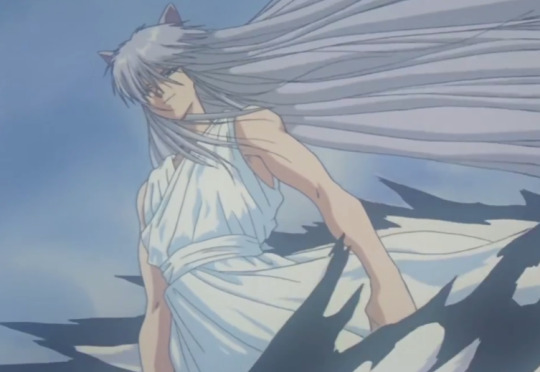

Although the current Kurama has the same memories and consciousness, intelligence, etc. and is still fully “Kurama”, and a 1000+ year old demon, he also seems to act...like a normal teenage boy. He giggles, jokes around, cares a lot about his friends, and of course, loves his human mother...

Hiei describes Kurama in an internal monologue in ep 47, and it’s very interesting...




Kurama also describes himself in this way, in the same ep:
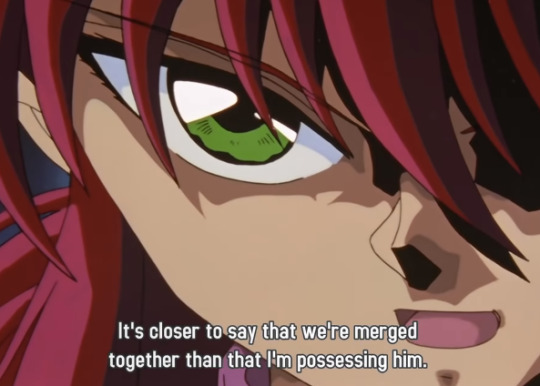

Although not in the manga, Kurama also says this in ep 108:

When Kurama talks about how he’s changed since being reborn, and how he’s become a different person... I think... it's more than just a change of heart. He's literally a different person, because his soul merged with that of the boy who would have been born as Minamino Shuichi.
And moreover, Kurama himself seems to be aware of this? in the way he describes himself...the whole “we’re merged,” “while I am Kurama, I am also Minamino Shuichi,” “no longer the same Kurama that I used to be”... And perhaps most convincingly, in this line he delivers in “Two Shots”:
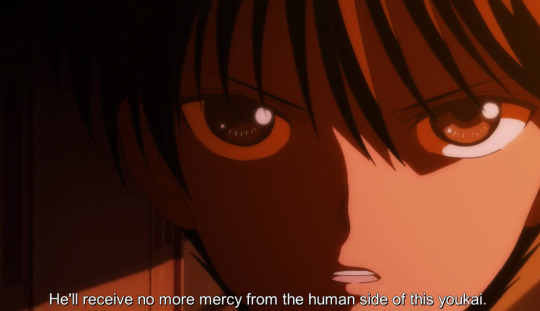
Specifically describing himself as having a “human side”, despite also explaining to Yusuke in his introduction that he is fully a demon, despite his human appearance.
Given his wisdom and intelligence, retained from his past as Yoko Kurama, this--his self-identity--is surely something he’s thought hard about over the years, and this is the conclusion he’s come to... Even though he is classified as a demon, this is the way he describes himself... as a fusion of sorts, as being part “human”... (and Hiei’s description is mostly likely influenced from what Kurama has told him, along with his own understanding of Kurama).
The current Kurama shows a profound duality, and it makes him such a fascinating character... in certain moments, he shows a coldness, a brutality, a willingness to take lives, and wisdom and intelligence that certainly goes far beyond his human years. Yet... stuff like how he giggles and jokes, and how he outsmarted Kaito by making a funny face... to me, this is something new... something unique to his current self...something the old Yoko Kurama wouldn’t do.

The way Kurama acts in the present day... the way he's 100% a demon, yet distinctly...human... makes so much sense if you think of him as being like a fusion?? When “he merged with the body of the human who would have been born as Minamino Shuichi”, I think their souls also merged. (edit: This also makes sense if you consider that in his severely wounded state, Yoko Kurama was essentially reduced to a bare soul, disembodied and dying--If this fusion between his dying spirit and this fresh, living human soul did not take place, he would not have survived. The unborn baby is not yet conscious, so Kurama’s concsiousness took over completely, but the fusion still occurred...)

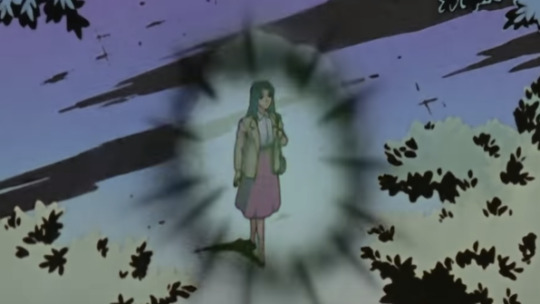
Kurama is still Kurama-- but there’s something added, something more. I think the human who would have been born as Shuichi would have been a very gentle person... so some of that got absorbed into Kurama's soul when they merged... and so his current, softer personality is not JUST a cruel demon who got touched by human kindness and had a change of heart... but a fusion of the original yoko’s personality, and the personality of the human boy he merged with. He did have a change of heart, but this was facilitated by him gaining... a new capacity for feelings? in a sense? due to this fusion.
This interpretation I have of him... it makes me feel so much for him...b/c even tho he's...not the same person anymore, he still has the same memories and consciousness; he both is, and isn't, the same person. I think it probably contributes to the guilt and self hatred he feels on some level, which is evident in what he tells Yusuke in the beginning...
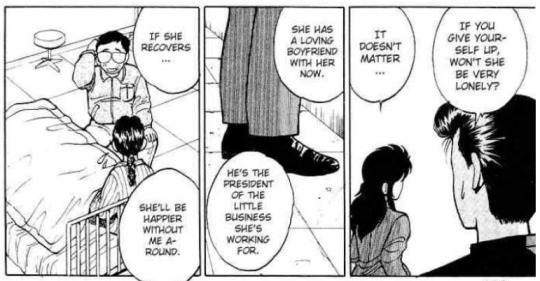

It’s true that he said he tried many times to leave throughout his life, to return to his previous life in the demon realm, but it’s also true that he was never able to. His mother’s smile, her sacrifice for him, her genuine warmth and love for him... it moved him, and he decided to stay, and to protect her and the things precious to him now. And I argue that the “human” side of him, the result of a fusion of souls, enhanced his capacity to be moved, weakened his resolve to return to his past life...
When other yokai accuse him of "going soft"... that's not quite what happened...it is, in some ways, but not the full story. Although he is still the ancient, 1000+ year old demon Kurama, and retains all his memories and sense of self... there is still a part of him, a new part, that really IS as young as he looks... one that is gentle, empathetic, kind, and constantly haunted by his past.
In some ways, this added layer of softness can be seen as a fallibility, an exploitable weakness... how convenient, for the cruel and merciless, cold and calculating thief to become “soft”... a soft point, a weak point, where there was only hardness before. But,
Kurama himself believes it is a strength. Although I do think he harbors some level of hidden self hatred, he doesn’t hate this side of himself. In fact, he embraces it, is proud of it, and will fight to protect what he has now with his life on the line. He has found people and things he wants to protect... he’s come to see the beauty of the human world around him, even the mundane... he’s come to see the beauty and power in something as simple and fragile as a rose.
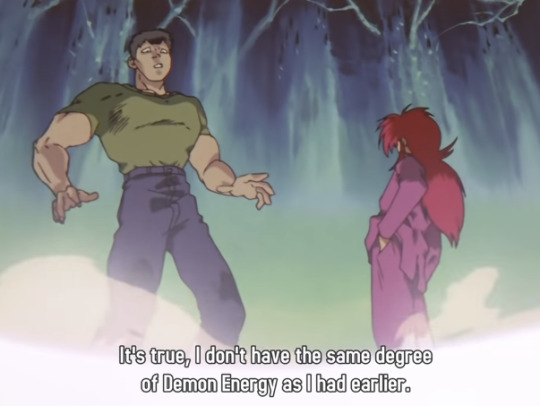
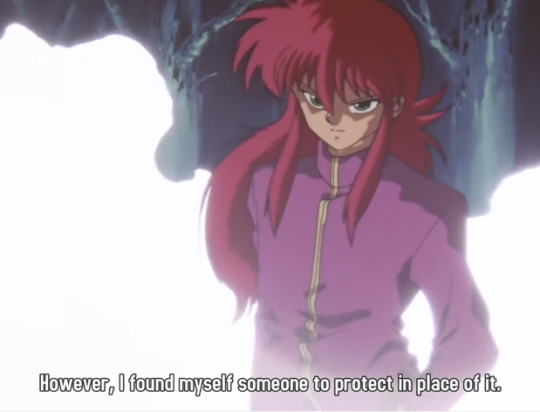
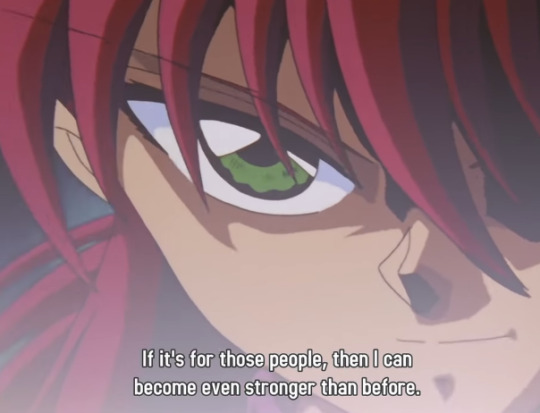
And the important people in Kurama’s life(e.g. Hiei), unlike the yokai who jeer and mock him, also see this part of him as a strength and not a weakness, and accept him as who he is today.
Kurama has a war in his heart... and this inner conflict and duality makes so much sense with the fusion interpretation. Itsuki makes this observation:
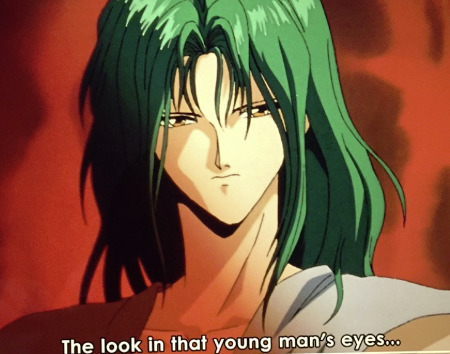

“affection” and “carnage”... two sides of himself, at war... consistent with his past life of violence and cruelty, and the gentle human soul he merged with that literally made him a different person... But again he’s still “Kurama”; he’s 100% yokai, not a human, and he remembers everything.
This headcanon of mine is why it doesn’t really feel right to me when I see people joke that Kurama’s just an old guy hanging out with a bunch of kids (like that steve buscemi meme lol). Again, in my interpretation... in some ways he IS just a teenage boy... even though he’s 1000+... which is why it makes sense that he genuinely enjoys having friends his “own age”... it’s more than just a facade of pretending to be a kid, I think.
And I mean...just look at him. HE...... IS BABIE 🥺🥺🥺

TL;DR I see the current Kurama as literally being a fusion of souls, literally “not the same Kurama” as before, and this colors the way I interpret him haha,,,
.............................
OK THIS POST IS ALREADY LONG AS ASS, WHY NOT MAKE IT EVEN LONGER BC THERE’S SMTH ELSE i WANTED TO POINT OUT
This might be unique to the anime, but it fits in nicely with my headcanon... In the original Japanese cast, Kurama(as Shuichi) is voiced by Megumi Ogata, and the Yoko Kurama of the past is voiced by Shigeru Nakahara (i.e., when he appears in the dark tournament, and in subsequent flashbacks to Kurama’s past). However, when Kurama transforms into his yoko form on his own in the Chapter Black arc, not by the influence of the potion that literally turns back time...he keeps his Megumi Ogata voice even in that form... whereas in flashbacks he's consistently voiced by Shigeru Nakahara. ITS A REALLY NICE TOUCH....and it confirms what he says when he's like i haven't actually reverted back, my body just transformed due to my heightened yoki.
And not only his voice, he even looks different... his yoko form is given a slightly different design in Chapter Black arc. In the dark tournament, his outfit is sleeveless, he has frayed eyebrows, and his ears are smooth.
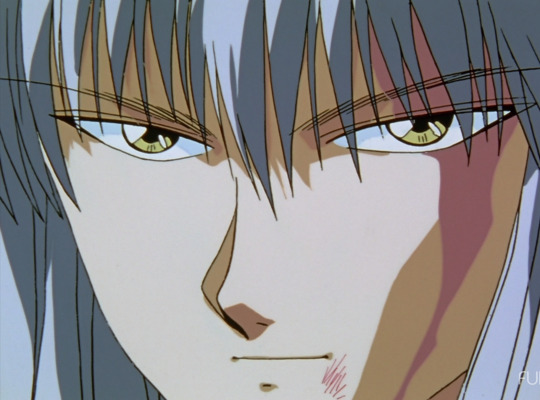
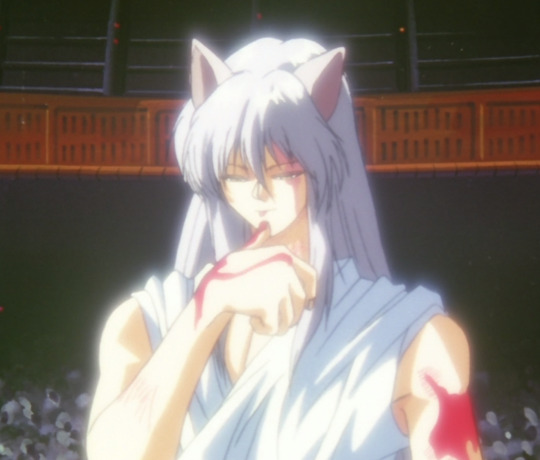
In black chapters... for some reason they started giving him sleeves
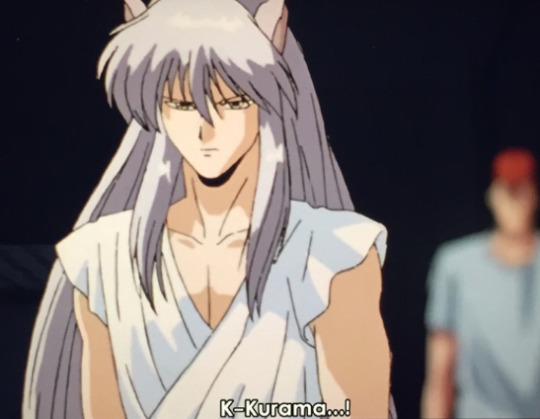
and more solid eyebrows...


and raggety ears? vs smooth


(SO CUTE I LOVE THEM...)
These differences are shown in this production note from the anime, indicating that this was a conscious design choice in the anime:

(I can’t read the text, but I see that episode #90 is specified in the right pic, which is the ep Kurama transforms into his yoko form in Black Chapters)
Anyway, these are very subtle details, but to me they’re another indicator that even in his yoko form he's not the same Kurama as he was before...!
OK THAT WAS LONG AF BUT I’M DONE NOW I THINK......... enjoy these kuramas before u go ^_^


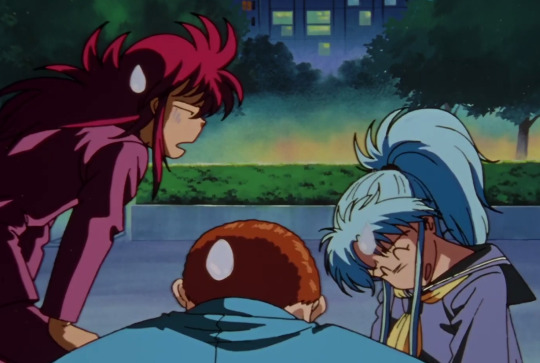
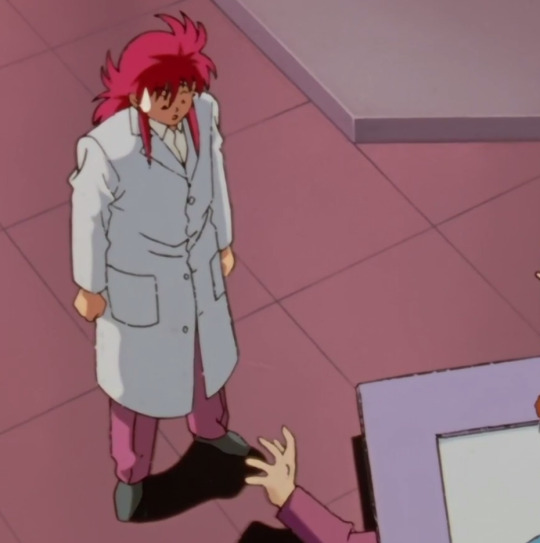


#fluffprattle#yu yu hakusho#kurama#holy shit that was long#i am so sorry#ANYWAY..........#i dont even know if this was comprehensible or not HITS SEND#KURAMA I WOULD FUCKIGN DIE FOR U
247 notes
·
View notes
Link
The Eiffel Tower Incident in Paris introduced two young new heroes (Ladybug and Chat Noir) and a new supervillain (Le Papillon) to the world. This event did not go unnoticed by the Justice League.
(a pre-New52 DCU/Miraculous Ladybug crossover fusion)
First Chapter | Previous Chapter | Next Chapter | Chapter Index
A variety of news reports and videos played on the main screen of the Justice League conference room on their outer space Watchtower satellite. Gathered around the table were the senior leaders of the heroic defensive organization.
They’d been watching these videos and reading real-time reports from Paris since the news first broke several hours earlier. The appearance of both a powerful new supervillain and vigilantes who seemed to be barely teenagers had spurred them to this emergency meeting. Fortunately for them, one of them had at least a general idea of what was going on.
“Each of these individuals appears to possess mystical items called Miraculous,” Zatanna, the leader of the mystics faction of the Justice League said. Her long black hair was streaked with a single lock of white that cut across her temple before being wound up into a bun that was held in place by a jeweled stick that looked suspiciously like a wand. She stood at the front of the conference room next to the digital screen. “They’re powerful artifacts that can grant their wielders unique abilities.” She paused one of the videos and expanded it to fill the entire screen. On screen were the three major players of the Eiffel Tower Incident: a girl dressed in red with black spots, a boy dressed in black with a distinctive feline theme, and a floating giant head that appeared to be made of a swarm of purple butterflies.
“So these people are not metahumans?” Superman asked. He sat at the head of the large conference room table. His black hair was touched with streaks of silver gray at the temples, and small lines of age around his eyes gave him a distinguished appearance.
Zatanna mused over the question before shaking her head. “Can’t be 100% certain at this point, but it’s more likely these are normal human beings. The only thing I know for sure is that the powers they’re exhibiting are derived from the Miraculous.”
The sorceress zoomed in on each individual one at a time. “The villain calling himself Le Papillon possesses the Butterfly Miraculous. This one gives the wielder the power of metamorphosis, the ability to transform ordinary people into… something more. In his hands, he appears to be mind controlling innocent people to turn them into villains to serve his own goals.”
She zoomed in on the young teenage boy who looked to be about thirteen or fourteen years of age. “This is Chat Noir. He possesses the Black Cat Miraculous, which gives him the power of destruction.” Zatanna activated a video which showed the boy’s destructive powers in action as a section of the Eiffel Tower immediately corroded into rust at his touch.
There was a murmur of shared concern over how such powers were in the hands of both a power-hungry villain and a teenager that looked like he’d only just reached his teens.
Finally Zatanna zoomed in on the girl. She was dressed in a red bodysuit covered in black spots and her black hair was tied back in twin pigtails that made her look even younger and more childlike than her feline companion, though it was likely that they were close to the same age. “This girl here is calling herself simply Ladybug, and obviously she wields the Ladybug Miraculous, which has powers of creation. Between herself and Chat Noir, she appears to have taken on the role of leader. She's also special in that she appears to have access to multiple powers, not just one.
In one video, they watched as she threw her weapon, a yo-yo of all things, into the air and it returned to her transformed into a parachute. It seemed an odd thing at first, but after a short bit, it turned out to be exactly what she needed to defeat the stone creature she and Chat Noir had been fighting. “This first ability appears to be creating an instant deus ex machina for the battle she’s in. She’s heard calling it her ‘Lucky Charm’.”
In a second video they watched as she used her yo-yo again, but this time to capture a purple butterfly that escaped from the stone creature that had been terrorizing the city. When she opened her yo-yo, the butterfly was now pure white as it flitted away. “Ladybug also appears to have the ability to purify the butterflies created by Le Papillon to possess others, releasing them from his control.”
Finally, a third video showed Ladybug throwing the used parachute Lucky Charm into the air, where it transformed in midair into a swarm of glowing red ladybugs that swept through the city at lightning speed and repaired all the damage that had been caused by the battle. “And finally, she appears to have the power to reverse all the damage caused by other Miraculous users. Even Chat Noir’s destruction of part of the Eiffel Tower was fixed. The people in Paris have started referring to it as ‘the Miraculous Cure’.”
Clearly the abilities Ladybug possessed impressed the gathering of heroes. “Her ability to reverse so much destruction is remarkable,” Diana, still their Wonder Woman but now Queen of the Amazons, said. “Is it limited just to things changed by the influence of other Miraculous users, or can it be expanded to destruction caused by other forces?”
Zatanna shook her head. “Honestly, we don’t know. There used to be a society of Guardians who protected and studied the Miraculous for ages, but their last known temple was destroyed around two centuries ago. At that time, all the Miraculous and most of the knowledge about them were assumed lost. My husband actually had a few incomplete scrolls about the Miraculous in his mystical archives, but nothing too substantial. Since the Eiffel Tower Incident, though, he’s gone on an expedition to the location of the temple ruins to see if there’s anything else he can find that survived its destruction.”
“It sounds as if you’re saying there are, or at least were, more Miraculous than just these three in Paris?” Superman asked.
“Not sure how many in total, but Constantine’s scrolls seem to indicate there’s at least seven.” She pulled up a digital image of a mostly intact parchment drawing of a circular design. The symbols of the Ladybug and Black Cat rested with prominence in the center in a yin-yang configuration. Radiating out from there was a ring with five sections, each with what appeared to be different symbols, one of which was an obvious butterfly shape.
Jessica Cruz, the current leader of the Green Lanterns of Earth, stood up to take a closer look at the images on the screen. “So for two hundred years, these artifacts were thought lost, and suddenly three of them resurface in Paris at the same time, one of which appears to have fallen into criminal hands, and the other two into the hands of children?” She turned to Zatanna. “Why does Le Papillon want the Black Cat and Ladybug Miraculous? True they are powerful, but couldn’t he just, theoretically, create villains with similar powers?”
“I don’t think Le Papillon wants them for their obvious powers.” Zatana pulled up another digital image, this one of a half-burned parchment dating from an ancient era. “This scroll appears to indicate that if someone were to possess both the Miraculous of Creation and Destruction at the same time, it would grant them the power to make any wish their heart desires, but at a cost.”
“What kind of cost?”
“That explanation unfortunately was on the destroyed portion. But it’s probably safe to assume that it would be something bad.” Then she regarded the others with a grave expression. “Then again, I think the more pressing concern we should have is what kind of wish does Le Papillon want to make, and how quickly can we stop him.” Zatana looked to the screen where Ladybug and Chat Noir stood together, celebrating their first victory with a cheerful fist-bump. “Those two may be strong with their Miraculous, but they’re still just children beneath the masks. Paris hasn’t reached out to the League yet for our assistance, but we can’t sit by and do nothing until they call us. Those kids need our help.”
The others agreed. However, the current Flash, Wallace West, raised a concern.
“I don’t think we can send just anyone to Paris from the League.”
The others looked at him, and the thirty-something year old African American speedster clarified. “Consider Le Papillon’s power. It appears he can exert a level of mind control over his victims, in addition to giving them an incredible amount of raw power and new abilities. And right now we don’t know how he’s selecting and capturing his victims. What happens if we send over people who already have powers like Clark, Diana, or myself? Even someone who isn’t a metahuman, but has magic like you Zatanna, or a Lantern Ring like Jessica. If Le Papillon manages to capture and turn even just one of us in this room to his side, then it could be a catastrophe not just for Paris, but the rest of the world.”
Batman had been quiet for most of the meeting. Now he rose to his feet and asked Zatanna for control of the main screen. Once he had it, he swept the images and videos off to one side and brought up the current roster of all active and reserved members of the Justice League and satellite teams they worked with regularly. There were probably about a hundred heroes photos on the screen.
“So we need to be strategic with who we send to Paris,” he started. “First, we eliminate all metahumans, aliens, and magic users. We can’t risk them being captured and turned by Le Papillon against us until we can discover the limitations of his power ” More than two-thirds of the photos on the screen blinked out, leaving only human heroes.
Superman nodded. "Let's keep the teenagers out of this fight for now too. It's clear Ladybug and Chat Noir are very young and very green. While I’m sure they would appreciate support from peers close to their own age eventually, what they need right now is an adult or two who can start mentoring and training them, if they don't have anyone supporting them right now."
About a fifth of the remaining roster vanished.
Wonder Woman studied who was left. Her eyes focused on one group specifically "We also need to send someone who can investigate Le Papillon. We need someone on the ground who can start hunting down who he really is so he can be brought to justice as quickly and efficiently as possible. Only then will Paris truly be safe." She looked to Batman, "We need your boys and girls. You’ve raised the best detectives."
Batman looked at the remainder which consisted solely of members tied to his team in Gotham and said nothing for a long moment.
"What's wrong Bruce?" Superman asked.
"The ones on the screen are good, but there’s one person who’s better than them all" The Dark Knight accessed a list of retired members of League and pulled one specific individual out for all to see.
Superman gave Batman a concerned look. "Are you sure? When he left the League, he was in a pretty bad place."
"I know Clark, but he's still the best detective of all of us in Gotham. He also has experience leading and mentoring a team of teenagers. If he can be convinced to help, he would be the best choice for any chance of success in Paris.”
-----
In Gotham Academy, a text message pinged on the phone of a professor who was teaching foreign language to a class of high school students. After a quick glance at the screen, the phone was locked once more and shoved back into his pocket before continuing with his lecture.
--------------------
Author Notes:
- On the Miraculous Ladybug side of this fusion, "The Eiffel Tower Incident" is everything from the "Stoneheart" episodes from Season 1.
- On the DCU side of the fusion, this version of the DCU is based on pre-New52 Earth. Samples of differences between pre-New52 and current canon: (1)Barbara Gordan is Oracle and wheelchair-bound. (2)Stephanie Brown and Cassandra Cain were both Batgirl. (3)Superman and Wonder Woman never dated. (4)Alfred Pennyworth is alive and well.
- However, on the DCU side of the fusion, there is a timeskip of around 15-17
#afewnovelideas#miraculous DC#a mockingbird in paris#mdc:amip#miraculous ladybug fanfiction#ml fanfic#batman fanfiction#batman fanfic
19 notes
·
View notes
Text
She-Ra: Racism Problem Pt. 1
Thanks to this post by @dyke-ra for inspiring me to write about this topic, I’m going to have to split this up cause there’s so much to talk about....
I worked a bit on my thesis today, which is about LGBTQIA+ representation in kid’s/young adult’s cartoons, and as soon as I got home I stumbled upon a post on my dash (reblogged by @highqualititty who has Very Good Art so check them out) and I was like!!!!! This is exactly what I was writing about with VLD and Steven Universe!!!! It reminds me a lot of this image by @racistz

So I want to point out some of the problems with She-Ra that I’ve noticed and that other people in the fandom have noticed as well, and talk about them in the context of Hollywood history, tropes/stereotypes, and well... colonialism.
There will be spoilers for She-Ra Season 3 so be warned. I’m also writing this kinda stream-of-consciousness-esque so apologies if it’s a bit jumbled.
PART I: Character Design - 1. Catra
Ok, so let’s start with Character Design. I want to focus on Catra and Mara for this. If people want I can talk about some of the worries I have about Huntara too.
Let’s start with Catra, and let’s do a little comparison.

Catra and Sugilite share a startling number of design traits. Pay particular note to the fact that they’re both seen as wild, misguided characters. Neither of these characters is coded as white. I would say Sugilite is pretty obviously a racist caricature of a black woman, not that Catra doesn’t have these tropes as well, but that Sugilite’s design and character traits have been widely discussed, especially in the really excellent article “All These Black Characters and 0 Done Right — How Steven Universe Fails Its Black Fanbase, Part I“ (there is no part II, as I believe the writer, Riley H, got essentially bullied into silence). In actuality, however, both of them have a lot of similarities. I’ll be using a lot of evidence about the coding of black women in media primarily, but there are a lot of other tropes you can find about other ethnic or racial codings as well. A lot of these tropes are also defined as being in the past, but there are still clear reverberations of them in the present, as I try to show here.
Riley H notes the Jezebel stereotype in the article I mentioned, which Catra seems to fall into somewhat. The Jim Crow Museum at Ferris State University says that “The descriptive words associated with this stereotype are singular in their focus: seductive, alluring, worldly, beguiling, tempting, and lewd. Historically, white women, as a category, were portrayed as models of self-respect, self-control, and modesty - even sexual purity, but black women were often portrayed as innately promiscuous, even predatory.” While Catra’s design does not have the same obvious extreme-hourglass shape that Sugilite’s does in its emphasis of hips and chest (jesus Rebecca Sugar, what were you thinking), Catra’s chest and hips are still accentuated with triangle designs that point to those areas; Catra’s hips are also decorated with strappy belts. Her pants are also ripped at the thighs, and she doesn’t wear shoes. She also wears skin-tight clothing; compare to Adora, who gets a big baggy coat, a long-sleeved shirt, and non-ripped pants (and shoes). Catra is also wearing red, a color associated with passion; while Adora’s jacket is red, she is most often seen in white, a color associated with purity. Plus, check out Glimmer’s fantasy imagery from S2, which is supposed to be a reference to the OG She-Ra but does not take into account that THESE ARE STILL TEENAGERS???:
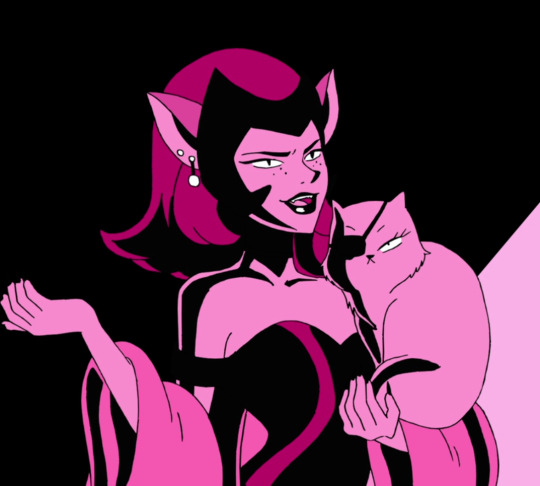
Also note that Catra’s arc thus has far has focused on her losing self-control and self-respect, while Adora’s arc has focused on her gaining those traits instead.
Two other stereotypes are important to acknowledge here: the Sapphire stereotype, which “popularly portrayed black women as sassy, emasculating and domineering. Unlike the Mammy figure, this trope depicted African American women as aggressive, loud, and angry - in direct violation of social norms,” and the black brute stereotype, which typically referred to black men but stereotyped them as “animalistic and brutish.” Catra is literally made animalistic by being part cat--if your defense is, “oh, well that’s just how she was in the original,” 1) things can you know... improve over time 2) it’s still really, really bad even if it was “used in the past series” and 3) she’s also covered in scars on her arms, which is an addition to her design that makes her seem like she gets into more fights than Adora and other Horde soldiers and/or had a rough past, making her more “brutish”/prone to fighting than the others. (Contrast to Adora’s now-revealed past where she was a Magic Baby Destined Hero from the Savior Planet.)
Plus, she still falls into the Sapphire trope. Adora was the favorite of the Horde, while Catra was the rebel and “too outspoken.” Catra is also punished more than others for failing to succeed in missions--Hordak even attempts to have her executed, despite the fact that most of his generals have also been failing just as much. Catra still talks back to him, and rarely is shown afraid--more often than not, she’s shown making “sassy” quips and talking down to others. Adora gets many more scenes of emotional vulnerability and growth. Both are/were members of the Horde as well and grew up traumatized, but Catra’s trauma villainizes her (although she may still get a redemption arc at some point) while Adora’s does not.
She is also very masculinized (is that a word?? oh well) when with Adora. She even takes the role of the “male dance partner” in the ball episode when they dance together, and is wearing a suit and tie (untied, to still depict that “wild” side). Look to Riley H’s article which discusses how Garnet in SU often takes the more masculine roles in fusion dances--there are clear parallels. While this inherently isn’t a problem, it’s a common trope that PoC women characters are made to be more masculine than their white counterparts. On top of this, much like how Pearl (white-coded) is the only one who can get through to Sugilite once she’s gone “out of control” (see the episode “Coach Steven”), Adora, the white savior (I will get to this problem later), is presumed to be the only one who can “get” to Catra or influence her behavior (although Scorpia made attempts, but she is also white...).
In summary: Catra is portrayed as animalistic, wild, prone to fights, and masculine especially in comparison to white-coded characters. Her arc thus far has made her a foil to Adora, but in doing so has followed a lot of stereotypical tropes and has heightened Adora’s position as a White Savior, especially post-S3.
(I didn’t talk about the “evil lesbian” trope, but since there are so many queer-coded characters on both sides, I am not sure if that trope applies here. I may make another post regarding that specific trope though if people would like. Essentially we’re getting dangerously close to that potential premise.)
2. Mara
Ok, so if you haven’t heard, Mara (the previous incarnation of She-Ra) was whitewashed in the earlier seasons of the show. Let the images provide the evidence, Season 3 vs prior:

Yikes...
I have seen an apology floating around on Tumblr from someone who worked on the show who claims they just didn’t notice this... which like, ok, maybe. There is also speculation that maybe they decided to design Mara this way last-minute. I’ve also seen some theories that She-Ra’s “form” is a white woman regardless of who wields the sword but that would be Super Yikes so let’s hope it’s not that.
There are plenty of resources available about why whitewashing characters is bad, although it’s somewhat unusual for this to be a discussion in animation. (Typically the discussion happens when Scarlett Johansson plays a character who isn’t white or cis for the ten billionth time.) But something similar did happen with Voltron: Legendary Defender on the cover of one of their comics. Check out this nonsense:
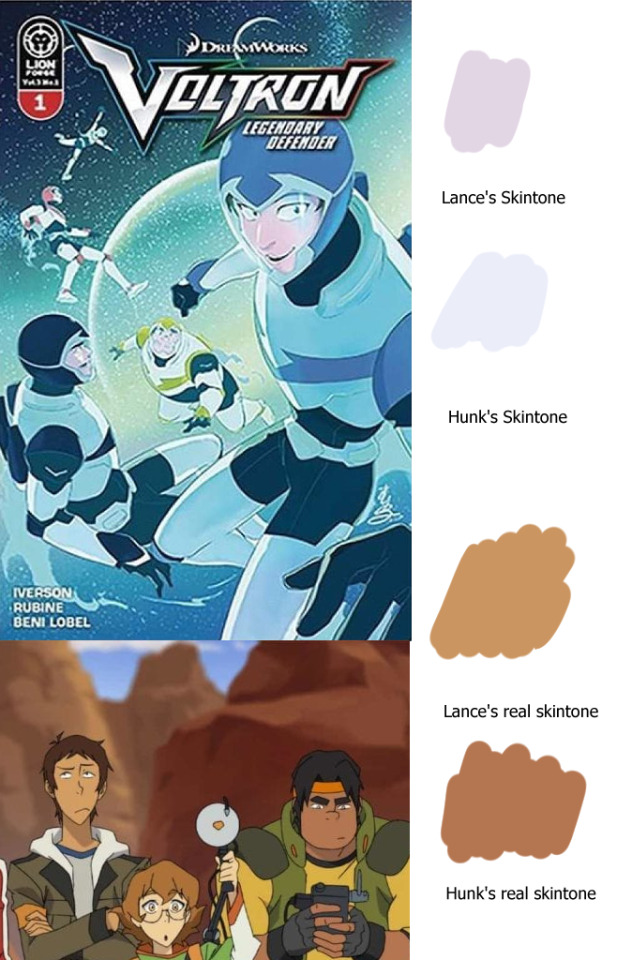
Like how to do you mess up, that bad?!!?!?!?
In any case, I believe a reprint was issued (much) later for this particular cover, but the fact remains that this is becoming enough of a problem that people should be checking for this. This whitewashing took place in the actual She-Ra episode and wasn’t caught beforehand by editors? Suspicious, and embarrassing...
Also, this doesn’t necessarily have to do with character design or whitewashing, but I am Suspicious that Mara had to sacrifice herself to save the planet while Adora did not... remind anyone of Allura? Anyone???? There is a whole problematic history regarding that which I can get into on a separate post as well. But since we don’t know exactly what happened to Mara yet, I’m leaving that alone for now.
----
So that’s the gist of the character design piece of the puzzle! Next I want to talk about the White Savior trope in She-Ra and how it’s really similar to Voltron and Steven Universe in that respect.
IS this all a bit of a reach? Maybe some of it?! But I doubt that ALL of it is. (The whitewashing definitely is not.) And the fact is that there has been a ton of problems with holistic representation in cartoons, and She-Ra isn’t trying to do anything different to counteract the bad stuff that’s been done before. In fact, it’s kind of following the same pattern as its predecessors. Characters, even non-human ones like Sugilite, are coded a certain way, and those codings are based off internalized systems of how we view the world and interpret it. So if you have a writer who’s not really closely examining those beliefs and systems without challenging them, you end up with stuff that follows all these problematic tropes and stereotypes.
I’m planning for my thesis to go over why I think this happens so often (mostly a lack of intersectionality). essentially I’m in way over my head and will have like, a 100 page thesis plus a creative piece too by the end of this and it’s due this fall cause i deferred it oooooh my gosh. Anyways! There will be more if you like.
485 notes
·
View notes
Text
Janet Jackson
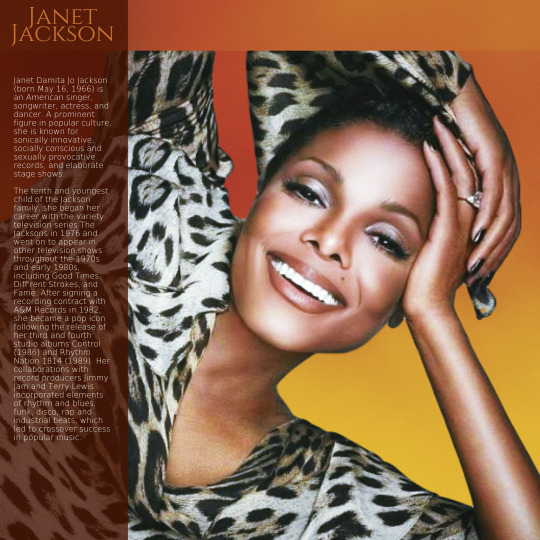
Janet Damita Jo Jackson (born May 16, 1966) is an American singer, songwriter, actress, and dancer. A prominent figure in popular culture, she is known for sonically innovative, socially conscious and sexually provocative records, and elaborate stage shows.
The tenth and youngest child of the Jackson family, she began her career with the variety television series The Jacksons in 1976 and went on to appear in other television shows throughout the 1970s and early 1980s, including Good Times, Diff'rent Strokes, and Fame. After signing a recording contract with A&M Records in 1982, she became a pop icon following the release of her third and fourth studio albums Control (1986) and Rhythm Nation 1814 (1989). Her collaborations with record producers Jimmy Jam and Terry Lewis incorporated elements of rhythm and blues, funk, disco, rap and industrial beats, which led to crossover success in popular music.
In 1991, Jackson signed the first of two record-breaking multimillion-dollar contracts with Virgin Records, establishing her as one of the highest-paid artists in the industry. Her fifth album Janet (1993) saw her develop a public image as a sex symbol as she began to explore sexuality in her music. That same year, she appeared in her first starring film role in Poetic Justice, and has since continued to act in feature films. Jackson then released her sixth studio album The Velvet Rope (1997), which is distinguished for its innovative production and dark lyrical content. By the end of the 1990s, she was named by Billboard magazine as the second most successful recording artist of the decade after Mariah Carey. Her seventh album All for You (2001) coincided with a celebration of her impact on the recording industry as the inaugural MTV Icon. After parting ways with Virgin Records, she released her tenth album Discipline (2008), her first and only album with Island Records. In 2015, she partnered with BMG Rights Management to launch her own record label, Rhythm Nation, and released her eleventh album Unbreakable the same year.
Having sold over 100 million records, Jackson is one of the world's best-selling music artists of all time. She has amassed an extensive catalog, with singles such as "Nasty", "Rhythm Nation", "That's the Way Love Goes", "Together Again" and "All for You"; she holds the record for the most consecutive top-ten entries on the US Billboard Hot 100 singles chart by a female artist with 18. In 2008, Billboard placed her number seven on its list of the Hot 100 All-Time Top Artists, and in 2010 ranked her fifth among the "Top 50 R&B/Hip-Hop Artists of the Past 25 Years". In December 2016, the magazine named her the second most successful dance club artist of all-time after Madonna. She has been cited as an inspiration among numerous performers. Jackson was inducted to the Rock and Roll Hall of Fame in 2019.
Life and career
1966–1985: Early life and career beginnings
Janet Jackson was born on May 16, 1966 in Gary, Indiana, the youngest of ten children, to Katherine Esther (née Scruse) and Joseph Walter Jackson. The Jacksons were lower-middle class and devout Jehovah's Witnesses, although Jackson would later refrain from organized religion. At a young age, her brothers began performing as the Jackson 5 in the Chicago-Gary area.
In March 1969, the group signed a record deal with Motown, and soon had their first number-one hit. The family then moved to the Encino neighborhood of Los Angeles. Jackson had initially desired to become a horse racing jockey or entertainment lawyer, with plans to support herself through acting. Despite this, she was anticipated to pursue a career in entertainment and considered the idea after recording herself in the studio.
At age seven, Jackson performed at the MGM Casino on the Las Vegas Strip. A biography revealed her father, Joseph Jackson, was emotionally withdrawn and told her to address him solely by his first name as a child. She began acting in the variety show The Jacksons in 1976.
In 1977, she was selected to have a starring role as Penny Gordon Woods in the sitcom Good Times. She later starred in A New Kind of Family and later got a recurring role on Diff'rent Strokes, portraying Charlene Duprey from seasons three to six. Jackson also played the role of Cleo Hewitt during the fourth season of Fame, but expressed indifference towards the series, largely due to the emotional stress of her secret marriage to R&B singer, James DeBarge. Jackson later elaborated on her time on the show in an interview with Anderson Cooper, revealing that the cast would occasionally play pranks on her, but she spoke fondly of them.
When Jackson was sixteen, her father and manager Joseph Jackson, arranged a contract for her with A&M Records. Her debut album, Janet Jackson, was released in 1982. It was produced by Angela Winbush, René Moore, Bobby Watson of Rufus and Leon Sylvers III, and overseen by her father Joseph. It peaked at No. 63 on the Billboard 200, and No. 6 on the publication's R&B albums chart, receiving little promotion. The album appeared on the Billboard Top Black Albums of 1983, while Jackson herself was the highest-ranking female vocalist on the Billboard Year-End Black Album Artists.
Jackson's second album, Dream Street, was released two years later. Dream Street reached No. 147 on the Billboard 200, and No. 19 on the R&B albums chart. The lead single "Don't Stand Another Chance" peaked at No. 9 on Billboard's R&B singles chart. Both albums consisted primarily of bubblegum pop music.
1986–1988: Control
After her second album, Jackson terminated business affairs with her family, commenting "I just wanted to get out of the house, get out from under my father, which was one of the most difficult things that I had to do." Attempting a third album, Jackson teamed with producers Jimmy Jam and Terry Lewis. They set out to achieve crossover pop appeal, while also creating a strong foundation within the urban market. Within six weeks, Jackson and the duo crafted her third studio album, Control, released in February 1986. The album shot to No. 1 on the Billboard 200, and was certified fivefold platinum by the Recording Industry Association of America (RIAA), selling over ten million copies worldwide.
Control was declared "remarkably nervy and mature" for a teenage act, also considered "an alternative to the sentimental balladry" which permeated radio, likening Jackson to Donna Summer's position of "unwilling to accept novelty status and taking her own steps to rise above it." The album spawned five top five singles, "What Have You Done for Me Lately", "Nasty", "When I Think of You", "Control", and "Let's Wait Awhile", and a top 15 hit with "The Pleasure Principle". "When I Think of You" became her first No. 1 hit on the Hot 100. Control received six Billboard Awards, including "Top Pop Singles Artist", and three Grammy nominations, most notably "Album of the Year". It also won four American Music Awards from twelve nominations, an unbroken record.
At this point, Jackson was successfully "shaking off the experience of being a shadow Jackson child", becoming "an artist in her own right". The album's lyrical content included several themes of empowerment, inspired by an incident of sexual harassment, with Jackson recalling "the danger hit home when a couple of guys started stalking me on the street and instead of running to Jimmy or Terry for protection, I took a stand. I backed them down. That's how songs like 'Nasty' and 'What Have You Done for Me Lately' were born, out of a sense of self-defense."
Its innovative fusion of dance-pop and industrial music with hip-hop and R&B undertones influenced the development of the new jack swing genre by bridging the gap between the latter two styles. The accompanying music videos shot for the album's singles became popular on MTV, and obtained a then-unknown Paula Abdul a recording contract for her choreography work with Jackson. Billboard stated "[Jackson's] accessible sound and spectacularly choreographed videos were irresistible to MTV, and helped the channel evolve from rock programming to a broader, beat-driven musical mix."
1989–1992: Janet Jackson's Rhythm Nation 1814
Jackson released her fourth album, Rhythm Nation 1814, in September 1989. Although her record label desired a direct sequel to Control, Jackson chose to include a socially conscious theme among various musical styles. She stated, "I know an album or a song can't change the world. I just want my music and my dance to catch the audience's attention, and to hold it long enough for them to listen to the lyrics." The album's central theme of unity was developed in response to various crimes and tragedies reported in the media.
Peaking at No. 1 on the Billboard 200, the album was certified sixfold platinum by the RIAA and sold over 12 million copies worldwide. Rolling Stone observed Jackson's artistic growth shifted from "personal freedom to more universal concerns—injustice, illiteracy, crime, drugs—without missing a beat." The album was also considered "the exclamation point on her career", consisting of a "diverse collection of songs flowing with the natural talent Jackson possesses", which effectively "expanded Janet's range in every conceivable direction", being "more credibly feminine, more crucially masculine, more viably adult, more believably childlike." With singles "Miss You Much", "Rhythm Nation", "Escapade", "Alright", "Come Back to Me", "Black Cat" and "Love Will Never Do (Without You)", it became the only album in history to produce number one hits in three separate calendar years, as well as the only album to achieve seven top five singles on the Hot 100.
Famous for its choreography and warehouse setting, the "Rhythm Nation" video is considered one of the most iconic and popular in history, with Jackson's military ensemble also making her a fashion icon. The video for "Love Will Never Do (Without You)" is notable for being the first instance of Jackson's transition into sexual imagery and midriff-baring style, becoming her trademark. Rhythm Nation 1814 became the highest selling album of 1990, winning a record fifteen Billboard Awards. The long-form "Rhythm Nation" music video won a Grammy Award.
Jackson's Rhythm Nation World Tour 1990 became the most successful debut tour in history and set a record for the fastest sell-out of Japan's Tokyo Dome. She established the "Rhythm Nation Scholarship," donating funds from the tour to various educational programs. As Jackson began her tour, she was acknowledged for the cultural impact of her music. Joel Selvin of the San Francisco Chronicle wrote "the 23-year-old has been making smash hit records for four years, becoming a fixture on MTV and a major role model to teenage girls across the country", and William Allen, then-executive vice president of the United Negro College Fund, told the Los Angeles Times, "Jackson is a role model for all young people to emulate and the message she has gotten to the young people of this country through the lyrics of 'Rhythm Nation 1814' is having positive effects."
She also received a star on the Hollywood Walk of Fame in recognition of her impact on the recording industry and philanthropic endeavors. The massive success experienced by Jackson placed her in league with Michael Jackson, Madonna, and Tina Turner for her achievements and influence. Ebony magazine remarked: "No individual or group has impacted the world of entertainment as have Michael and Janet Jackson," arguing that despite many imitators, few could surpass Jackson's "stunning style and dexterity."
With her recording contract under A&M Records fulfilled in 1991, she signed a multimillion-dollar deal with Virgin Records—estimated between thirty-two to fifty million dollars—making her the highest paid recording artist at the time. The recording contract also established her reputation as the "Queen of Pop." In 1992, Jackson provided guest vocals on Luther Vandross's "The Best Things in Life Are Free", becoming a top ten Billboard hit and reaching the top ten internationally.
1993–1996: Janet, Poetic Justice, and Design of a Decade
Jackson's fifth studio album Janet, was released in May 1993. The record opened at number one on the Billboard 200, making Jackson the first female artist in the Nielsen SoundScan era to do so. Certified sixfold platinum by the RIAA, it sold over 14 million copies worldwide.
Janet spawned five singles and four promotional singles, receiving various certifications worldwide. The lead single "That's the Way Love Goes" won the Grammy Award for Best R&B Song and topped the Billboard Hot 100 for eight consecutive weeks. "Again" reached number one for two weeks, while "If" and "Any Time, Any Place" peaked in the top four. "Because of Love" and "You Want This" charted within the top ten.
The album experimented with a diverse number of genres, including contemporary R&B, deep house, swing jazz, hip hop, rock, and pop, with Billboard describing each as being "delivered with consummate skill and passion." Jackson took a larger role in songwriting and production than she did on her previous albums, explaining she found it necessary "to write all the lyrics and half of the melodies" while also speaking candidly about incorporating her sexuality into the album's content. Rolling Stone wrote "[a]s princess of America's black royal family, everything Janet Jackson does is important. Whether proclaiming herself in charge of her life, as she did on Control (1986), or commander in chief of a rhythm army dancing to fight society's problems (Rhythm Nation 1814, from 1989), she's influential. And when she announces her sexual maturity, as she does on her new album, Janet., it's a cultural moment."
In July 1993, Jackson made her film debut in Poetic Justice. While the film received mixed reviews, her performance was described as "beguiling" and "believably eccentric." Jackson's ballad "Again", which was written for the film, received Golden Globe and Academy Award nominations for "Best Original Song."
In September 1993, Jackson appeared topless on the cover of Rolling Stone, with her breasts covered by her then-husband, René Elizondo, Jr. The photograph is the original version of the cropped image used on the Janet album cover, shot by Patrick Demarchelier. The Vancouver Sun reported, "Jackson, 27, remains clearly established as both role model and sex symbol; the Rolling Stone photo of Jackson ... became one of the most recognizable, and most lampooned, magazine covers."
The Janet World Tour launched in support of the studio album garnered criticism for Jackson's lack of vocal proficiency and spontaneity, but earned critical acclaim for her showmanship. It was described as erasing the line between "stadium-size pop music concerts and full-scale theatrical extravaganzas."
During this time, her brother Michael was immersed in a child sex abuse scandal, of which he denied any wrongdoing. She provided moral support, defending her brother, and denied abuse allegations regarding her parents made by her sister La Toya.
She collaborated with Michael on "Scream", the lead single from his album HIStory, released 1995. The song was written by both siblings as a response to media scrutiny. It debuted at number five on the Hot 100 singles chart, becoming the first song ever to debut within the top five. Its music video, directed by Mark Romanek, was broadcast to approximately 64 million viewers and listed in Guinness World Records as the "Most Expensive Music Video Ever Made", costing $7 million. The clip won the 1996 Grammy Award for Best Short Form Music Video.
Jackson's first compilation album, Design of a Decade: 1986–1996, was released in 1995. It peaked at number three on the Billboard 200. The lead single, "Runaway", became the first song by a female artist to debut within the top ten of the Hot 100, reaching number three. Design of a Decade 1986/1996 was certified double platinum by the RIAA and sold ten million copies worldwide.
Jackson's influence in pop music continued to garner acclaim, as The Boston Globe remarked "If you're talking about the female power elite in pop, you can't get much higher than Janet Jackson, Bonnie Raitt, Madonna and Yoko Ono. Their collective influence ... is beyond measure. And who could dispute that Janet Jackson now has more credibility than brother Michael?"
Jackson renewed her contract with Virgin Records for a reported $80 million the following year. The contract established her as the then highest-paid recording artist in history, surpassing the recording industry's then-unparalleled $60 million contracts earned by Michael Jackson and Madonna.
1997–1999: The Velvet Rope
Jackson began suffering from severe depression and anxiety, leading her to chronicle the experience in her sixth album, The Velvet Rope, released October 1997. Jackson returned with a dramatic change in image, boasting vibrant red hair, nasal piercings, and tattoos. The album is primarily centered on the idea that everyone has an intrinsic need to belong. Aside from encompassing lyrics relating to social issues such as same-sex relationships, homophobia and domestic violence, it also contains themes of sadomasochism and is considered far more sexually explicit in nature than her previous release, Janet.
The record was hailed as "her most daring, elaborate and accomplished album" by The New York Times, while Billboard ranked it as "the best American album of the year and the most empowering of her last five." The album debuted at number one on the Billboard 200 and was certified triple platinum, selling over ten million worldwide.
The lead single "Got 'til It's Gone" was released in August 1997, featuring guest vocals from folk singer Joni Mitchell and rapper Q-Tip. The song's music video, depicting a pre-Apartheid celebration, won the Grammy Award for Best Short Form Music Video. "Together Again" became Jackson's eighth number-one hit on the Billboard Hot 100, placing her on par with Elton John, Diana Ross, and the Rolling Stones. It spent a record forty-six weeks on the Hot 100 and nineteen weeks on the United Kingdom's singles chart. It sold six million copies worldwide, becoming one of the best-selling singles of all time. "I Get Lonely" peaked at number three on the Hot 100, and received a Grammy nomination for Best Female R&B Vocal Performance. It was Jackson's eighteenth consecutive top ten hit, making her the only female artist to garner that achievement; and surpassed only by Elvis Presley and the Beatles.
Several other singles were released, including "Go Deep" and the ballad "Every Time", which was controversial for the nudity displayed in its music video. The album fully established Jackson as a gay icon for its themes regarding homosexuality and protesting homophobia. "Together Again", a "post-Aids pop song", and "Free Xone", considered "a paean to homosexuality" and an "anti-homophobia track", were praised for their lyrical context, in addition to Jackson's lesbian reinterpretation of Rod Stewart's "Tonight's the Night".
The Velvet Rope received an award for "Outstanding Music Album" at the 9th Annual GLAAD Media Awards and was honored by the National Black Lesbian and Gay Leadership Forum. A portion of the proceeds from "Together Again" were donated to the American Foundation for AIDS Research.
Jackson embarked on The Velvet Rope Tour, traveling to Europe, North America, Asia, Africa, New Zealand, and Australia. The tour received praise for its theatrics, choreography, and Jackson's vocal performance. It was likened to "the ambition and glamour of a Broadway musical", and exclaimed as "only fitting that the concert program credits her as the show's 'creator and director'."
The tour's HBO special, The Velvet Rope: Live in Madison Square Garden, garnered more than fifteen million viewers. It surpassed the ratings of all four major networks among viewers subscribed to the channel. The concert won an Emmy Award from a total of four nominations. Jackson donated a portion of the tour's sales to America's Promise, an organization founded by Colin Powell to assist disenfranchised youth.
As the tour concluded, Jackson lent guest vocals to several collaborations, including Shaggy's "Luv Me, Luv Me", used for the film How Stella Got Her Groove Back, as well as "Girlfriend/Boyfriend" with Teddy Riley's group Blackstreet, and "What's It Gonna Be?!" with Busta Rhymes. The latter two music videos are both among the most expensive music videos ever produced, with "What's It Gonna Be?!" becoming a number-one hit on the Billboard Hip-Hop Singles and Hot Rap Tracks charts, reaching the top three of the Hot 100.
Jackson also contributed the ballad "God's Stepchild" to the Down in the Delta soundtrack. Jackson recorded a duet with Elton John titled "I Know the Truth," included on the soundtrack to Elton John and Tim Rice's Aida. At the 1999 World Music Awards, Jackson received the Legend Award for "outstanding contribution to the pop industry". Billboard ranked Jackson as the second most successful artist of the decade, behind Mariah Carey.
2000–2003: Nutty Professor II: The Klumps and All for You
In July 2000, Jackson appeared in her second film, Nutty Professor II: The Klumps, as the role of Professor Denise Gaines, opposite Eddie Murphy. Director Peter Segal stated "Janet Jackson was a natural fit, and an obvious choice." The film became her second to open at number one, grossing an estimated total of nearly $170 million worldwide. Jackson's single "Doesn't Really Matter", used for the film's soundtrack, became her ninth number-one single on the Hot 100.
Preceding the release of her seventh album, MTV honored Jackson with the network's inaugural "MTV Icon" ceremony, honoring her "significant contributions to music, music video and pop culture while tremendously impacting the MTV generation." The event paid tribute to Jackson's career and influence, including commentary from Britney Spears, Jennifer Lopez, Aaliyah, and Jessica Simpson, and performances by 'N Sync, Pink, Destiny's Child, Usher, Buckcherry, Mýa, Macy Gray, and Outkast. The American Music Awards also honored Jackson with the Award of Merit for "her finely crafted, critically acclaimed and socially conscious, multi-platinum albums."
Jackson's seventh album, All for You, was released in April 2001. It opened at number one on the Billboard 200 with 605,000 copies sold, the highest first-week sales of her career, and among the highest first-week sales by a female artist in history. The album was a return to an upbeat dance style, receiving generally positive reception. Jackson received praise for indulging in "textures as dizzying as a new infatuation", in contrast to other artists attempting to "match the angularity of hip-hop" and following trends. All for You was certified double platinum by the RIAA and sold nine million copies worldwide.
The album's lead single, "All for You", debuted on the Hot 100 at number fourteen, setting a record for the highest debut by a single that was not commercially available. Jackson was titled "Queen of Radio" by MTV as the single made airplay history, being "added to every pop, rhythmic and urban radio station" within its first week. The song broke the overall airplay debut record with a first week audience of seventy million, debuting at number nine on the Radio Songs chart. It topped the Hot 100 for seven weeks, also reaching the top ten in eleven countries. The song received a Grammy Award for Best Dance Recording. "Someone to Call My Lover" peaked at number three on the Hot 100. Built around a sample of the iconic 1972 hit "You're So Vain" by Carly Simon, "Son of a Gun (I Betcha Think This Song Is About You)" featured Simon herself, along with Missy Elliott on remixes of the single.
In July 2001, Jackson embarked on the All for You Tour, which was also broadcast on a concert special for HBO watched by twelve million viewers. The tour traveled throughout the United States and Japan, although European and Asian dates were required to be canceled following the September 11 terrorist attacks. The Los Angeles Times complimented Jackson's showmanship. Richard Harrington of the Washington Post said Jackson's performance surpassed her contemporaries, but Bob Massy of Spin thought her dancers "threw crisper moves" and her supporting singers were mixed nearly as high, though declared "Janet cast herself as the real entertainment." Jackson donated a portion of the tour's proceeds to the Boys & Girls Clubs of America.
The following year, Jackson began receiving media attention for her rumored relationships with Justin Timberlake, actor Matthew McConaughey, and record producer Jermaine Dupri. Upon the release of Timberlake's debut solo album Justified, Jackson provided vocals on "(And She Said) Take Me Now" per Timberlake's request, with the song initially planned as a single. Jackson collaborated with reggae artist Beenie Man for the song "Feel It Boy", produced by the Neptunes.
2004–2005: Super Bowl XXXVIII controversy and Damita Jo
Jackson was chosen by the National Football League and MTV to perform at the Super Bowl XXXVIII halftime show in February 2004. She performed a medley of "All for You", "Rhythm Nation", and an excerpt of "The Knowledge" before performing "Rock Your Body" alongside surprise guest Justin Timberlake. As Timberlake sang the lyric "I'm gonna have you naked by the end of this song", he tore open her costume, exposing her right breast to 140 million viewers.
Jackson issued an apology after the performance, saying that the incident was accidental and unintended, explaining that Timberlake was only meant to pull away a bustier and leave the red-lace bra intact. She commented, "I am really sorry if I offended anyone. That was truly not my intention ... MTV, CBS, the NFL had no knowledge of this whatsoever, and unfortunately, the whole thing went wrong in the end." Timberlake also issued an apology, calling the accident a "wardrobe malfunction." The incident became the most recorded and replayed moment in TiVo history, enticing an estimated 35,000 new subscribers. Jawed Karim has stated that the incident inspired the creation of YouTube, as he noted that it was difficult for him to find videos of the incident online.
It is regarded as one of the most controversial television events in history, and Jackson was later listed in Guinness World Records as the "Most Searched in Internet History" and the "Most Searched for News Item". CBS, the NFL, and MTV denied any knowledge of the incident and all responsibility for it. The Federal Communications Commission heavily fined all companies involved and continued an investigation for eight years, ultimately losing its appeal for a $550,000 fine against CBS.
Following the incident, CBS permitted Timberlake to appear at the 46th Grammy Awards ceremony but did not allow Jackson to attend, forcing her to withdraw after being scheduled as a presenter. The controversy halted plans for Jackson to star in the biographical film of singer and activist Lena Horne, which was to be produced by American Broadcasting Company. Horne was reportedly displeased by the incident, but Jackson's representatives stated that she withdrew from the project willingly. A Mickey Mouse statue wearing Jackson's iconic "Rhythm Nation" outfit was mantled at Walt Disney World theme park the previous year to honor her legacy, but it was removed following her controversial performance.
Jackson's eighth studio album Damita Jo was released in March 2004, titled after her middle name. It debuted at number two on the Billboard 200. The album received mixed to positive reviews, praising the sonic innovation of selected songs and Jackson's vocal harmonies, while others criticized its frequent themes of carnality. However, several critics' reviews focused on the Super Bowl incident, rather than critiquing the album itself. It was certified platinum by the RIAA within a month, and sold over three million copies worldwide.
The album's performance was affected by blacklisting from radio and music channels, in part at the behest of CBS CEO Les Moonves. Conglomerates involved in the boycott included Viacom and CBS, subsidiaries MTV, Clear Channel Communications, and Infinity Broadcasting, the latter two among the largest radio broadcasters. The blacklist was placed into effect preceding the release of Damita Jo and continued throughout the course of Jackson's following two albums. Entertainment conglomerate Viacom owns MTV, VH1, and many radio formats, and a senior executive commented that they were "absolutely bailing on the record. The pressure is so great, they can't align with anything related to Janet. The high-ups are still pissed at her, and this is a punitive measure."
Prior to the incident, Damita Jo was expected to outsell prior release All for You. Its three singles received positive reviews but failed to achieve high chart positions, although each was predicted to perform extremely well under different circumstances. Billboard reported that Damita Jo "was largely overshadowed by the Super Bowl fiasco.... The three singles it spawned were blacklisted by pop radio—they were also the album's biggest highlights".
For the album's promotion, Jackson appeared as a host on Saturday Night Live performing two songs, and she was also a guest star on the sitcom Will & Grace portraying herself. Jackson received several career accolades upon the album's release, including the "Legend Award" at the Radio Music Awards, "Inspiration Award" from the Japan Video Music Awards, "Lifetime Achievement Award" at the Soul Train Music Awards, and a Teen Choice Awards nomination for "Favorite Female."
In November 2004, she was honored as a role model by 100 Black Men of America, Inc. and presented with the organization's Artistic Achievement Award saluting "a career that has gone from success to greater success." The organization responded to criticism for honoring Jackson in light of the Super Bowl incident by saying that "an individual's worth can't be judged by a single moment in that person's life." In June 2005, she was honored with a Humanitarian Award by the Human Rights Campaign and AIDS Project Los Angeles as recognition for her involvement in raising money for AIDS charities.
2006–2007: 20 Y.O. and Why Did I Get Married?
Jackson began recording her ninth studio album, 20 Y.O., in 2005. She recorded with producers Dupri, Jam and Lewis for several months during the following year. The album's title was a reference to the two decades since the release of her breakthrough album Control, representing the album's "celebration of the joyful liberation and history-making musical style."
To promote the album, Jackson appeared in various magazines, and performed on the Today Show and Billboard Awards. Jackson's Us Weekly cover, revealing her slim figure after heavy media focus was placed on her fluctuations in weight, became the magazine's best-selling issue in history. 20 Y.O. was released in September 2006 and debuted at number two on the Billboard 200. The album received mixed reviews, with multiple critics chastising the production and involvement of Jermaine Dupri. Rolling Stone disagreed with the album's reference to Control, saying "If we were her, we wouldn't make the comparison."
Jackson's airplay and music channel blacklist remained persistent, massively affecting her chart performance and exposure. However, lead single "Call on Me", which featured rapper Nelly, peaked at number twenty-five on the Hot 100, number one on the Hot R&B/Hip-Hop Songs chart, and number six in the United Kingdom. The video for the album's second single, "So Excited", was directed by Joseph Kahn and portrayed Jackson's clothes disappearing through a complex dance routine.
20 Y.O. was certified platinum by the RIAA and sold 1.5 million worldwide, also receiving a Grammy nomination for Best Contemporary R&B Album.After the album's release, Dupri was condemned for his production and misguidance of the album, and subsequently was removed from his position at Virgin Records. Slant Magazine stated, "After promising a return to Janet's dance-pop origins, [Dupri] opted to aim for urban audiences, a colossal mistake that cost Dupri his job and, probably, Janet her deal with Virgin."
Jackson was ranked the seventh richest woman in the entertainment industry by Forbes, having amassed a fortune of over $150 million. In 2007, she starred opposite Tyler Perry as a psychotherapist in the film Why Did I Get Married?. It became her third consecutive film to open at number one at the box office, grossing $60 million in total. Jackson's performance was praised for its "soft authority", though also described as "charming, yet bland".
2008–2009: Discipline and Number Ones
Jackson signed with Island Records after her contract with Virgin was fulfilled. She interrupted plans for touring and began recording with various producers, including Rodney "Darkchild" Jerkins, Tricky Stewart, and Stargate. Her tenth studio album, Discipline, was released in February 2008, opening at number one. Despite radio blacklisting, the album's first single "Feedback" peaked at number nineteen on the Hot 100 and nine on Pop Songs, her highest charting single since "Someone to Call My Lover".
Also in February 2008, Jackson won an Image Award for "Outstanding Supporting Actress in a Motion Picture" for the role. Jackson was also approached to record the lead single for the film Rush Hour 3. Jackson was awarded the Vanguard Award at the 19th annual GLAAD Media Awards, honoring her contributions in promoting equal rights among the gay community. The organization's president commented, "Ms. Jackson has a tremendous following inside the LGBT community and out, and having her stand with us against the defamation that LGBT people still face in our country is extremely significant."
Jackson's fifth concert tour, the Rock Witchu Tour, began in September 2008. Jackson parted with Island Records through mutual agreement. Billboard disclosed Jackson was dissatisfied with LA Reid's handling of the album and its promotion, saying "the label agreed to dissolve their relationship with the artist at her request." Producer Rodney Jerkins expressed "I felt like it wasn't pushed correctly.... She just didn't get her just-do as an artist of that magnitude."
In June 2009, Jackson's brother Michael died at age fifty. She spoke publicly concerning his death at the 2009 BET Awards, stating "I'd just like to say, to you, Michael is an icon, to us, Michael is family. And he will forever live in all of our hearts. On behalf of my family and myself, thank you for all of your love, thank you for all of your support. We miss him so much." In an interview, she revealed she had first learned of his death while filming Why Did I Get Married Too?.
Amidst mourning with her family, she focused on work to deal with the grief, avoiding any news coverage of her sibling's death. She commented, "it's still important to face reality, and not that I'm running, but sometimes you just need to get away for a second." During this time, she ended her seven-year relationship with Jermaine Dupri.
Several months later, Jackson performed a tribute to Michael at the 2009 MTV Video Music Awards, performing their duet "Scream". MTV stated "there was no one better than Janet to anchor it and send a really powerful message." The performance was lauded by critics, with Entertainment Weekly affirming the rendition "as energetic as it was heartfelt".
Jackson's second hits compilation, Number Ones (retitled The Best for international releases), was released in November 2009. For promotion, she performed a medley of hits at the American Music Awards, Capital FM's Jingle Bell Ball at London's O2 arena, and The X-Factor. The album's promotional single "Make Me", produced with Rodney "Darkchild" Jerkins, debuted in September. It became Jackson's nineteenth number one on the Hot Dance Club Songs chart, making her the first artist to have number-one singles in four separate decades.
Later that month, Jackson chaired the inaugural benefit of amfAR, The Foundation for AIDS Research, held in Milan in conjunction with fashion week. The foundation's CEO stated "We are profoundly grateful to Janet Jackson for joining amfAR as a chair of its first event in Milan.... She brings incomparable grace and a history of dedication to the fight against AIDS." The event raised a total of $1.1 million for the nonprofit organization.
2010–2014: Film projects and True You
In April 2010, Jackson reprised her role in the sequel to Why Did I Get Married? titled Why Did I Get Married Too?. The film opened at number two, grossing sixty million in total. Jackson's performance was hailed as "invigorating and oddly funny", and praised for her "willingness to be seen at her most disheveled". Her performance earned an Image Award for "Outstanding Actress in a Motion Picture". Jackson recorded the film's theme, "Nothing", released as a promotional single. The song was performed on the ninth season finale of American Idol along with "Again" and "Nasty".
In July, Jackson modeled for the Blackglama clothing line featuring mink fur, which was criticized by the animal rights organisation PETA. Jackson then helped design a signature line of clothing and accessories for Blackglama, to be sold at Saks Fifth Avenue and Bloomingdales. Universal Music released the hits compilation Icon: Number Ones as the debut of the Icon compilation series.
In November 2010, Jackson starred as Joanna in the drama For Colored Girls, the film adaptation of Ntozake Shange's 1975 play For Colored Girls Who Have Considered Suicide When the Rainbow Is Enuf. The Wall Street Journal stated Jackson "recites verses written by Ntozake Shange, the author of the play that inspired the film ... But instead of offering up a mannered coffeehouse reading of the lines, Jackson makes the words sound like ordinary—though very eloquent—speech." Jackson's portrayal the film was likened to Meryl Streep as Miranda Priestly in The Devil Wears Prada. Her performance earned Black Reel Awards nominations in the categories of Outstanding Supporting Actress and Outstanding Ensemble.
Jackson announced plans to embark on her largest world tour in support of her second hits collection, Number Ones. The tour, entitled Number Ones, Up Close and Personal, held concerts in thirty-five global cities, selected by fans who submitted suggestions on her official website. During the tour, Jackson performed thirty-five number one hits and dedicated a song to each city. Mattel released a limited-edition Barbie of Jackson titled "Divinely Janet", auctioned for over $15,000, with proceeds donated to Project Angel Food.
Jackson released the self-help book True You: A Journey to Finding and Loving Yourself in February 2011, co-written with David Ritz. It chronicled her struggle with weight and confidence, also publishing letters from fans. It topped The New York Times' Best Seller list the following month. Additionally, she signed a film production contract with Lions Gate Entertainment to "select, develop and produce a feature film for the independent studio."
Jackson became the first female pop singer to perform at the I. M. Pei glass pyramid at the Louvre Museum, raising contributions for the restoration of iconic artwork. Jackson was selected to endorse fashion line Blackglama for a second year, being the first celebrity in the line's history chosen to do so. She partnered with the label to release a fifteen-piece collection of luxury products.
In 2012, Jackson endorsed Nutrisystem, sponsoring their weight-loss program after struggling with weight fluctuations in the past. With the program, she donated ten million dollars in meals to the hungry. She was honored by amfAR for her contributions to AIDS research when chairing the Cinema Against AIDS gala during the Cannes Film Festival. She also participated in a public service announcement for UNICEF to help starving children.
2015–2019: Unbreakable and concert residency
On May 16, 2015, Jackson announced plans to release a new album and to embark on a world concert tour. She outlined her intention to release her new album in the fall of 2015 under her own record label, Rhythm Nation, distributed by BMG Rights Management. The launch of Rhythm Nation established Jackson as one of the few African-American female musicians to own a record label.
On June 15, 2015, Jackson announced the first set of dates for the North American leg of her Unbreakable World Tour. On June 22, the lead single "No Sleeep" was released from the album. Jackson's solo version of the single debuted on the Hot 100 at number 67, marking her 40th entry on the chart. The song went to number 1 on the Billboard + Twitter Trending 140 immediately following the release. The album version featuring J. Cole enabled it to re-enter the Hot 100 with a new peak position at number 63, while also topping the Adult R&B Songs chart.
BET presented Jackson with their inaugural Ultimate Icon: Music Dance Visual award at the BET Awards 2015, which also featured a dance tribute to her performed by Ciara, Jason Derulo and Tinashe. It was announced she would launch a luxury jewelry line called the "Janet Jackson Unbreakable Diamonds collection," a joint venture between herself and Paul Raps New York. On August 20, she released a preview of a new song "The Great Forever," while also confirming the title of her eleventh studio album as Unbreakable.
Jimmy Jam and Terry Lewis stated that Jackson's concept for the album was developed simultaneously with the accompanying tour's production and that its composition will differ from the majority of her catalog. They also stated that the album's theme reflects "being able to be vulnerable and to be able to withstand what comes to you," drawing on Jackson's experiences over the past several years. The album's title track "Unbreakable" was released on September 3, 2015, debuting on Apple Music's Beats 1 radio station, hosted by Ebro Darden. The album was also made available for pre-order on iTunes the same day. "Burnitup!" featuring Missy Elliott debuted on BBC Radio 1 on September 24, 2015. Unbreakable was released on October 2, 2015. It received largely positive reviews, including those by The Wall Street Journal, The New York Times, USA Today, Los Angeles Times, and The Guardian. The following week, Jackson received her first nomination to be inducted into the Rock and Roll Hall of Fame. Her album debuted at number one on the Billboard 200, becoming her seventh album to top the chart in the United States.
On April 6, 2016, Jackson announced that she was "planning her family" with husband Wissam Al Mana, resulting in her postponing her tour. On May 1, 2017, Jackson announced she would resume her Unbreakable World Tour, now known as the State of the World Tour. The revamped tour launched on September 7, 2017. Refocusing the tour's theme to reflect socially conscious messages from Jackson's entire music catalog, a number of songs selected for the concert set list along with corresponding imagery depicted on stage address racism, white supremacy, fascism, xenophobia and police brutality. The tour opened to positive critical reception, with several commentators praising Jackson's post-pregnancy physical fitness, showmanship and socially conscious messages.
Her emotional rendition of "What About", a song about domestic violence originally recorded for The Velvet Rope, drew media attention highlighting her recent separation from her husband; Jackson's brother Randy alleges she suffered verbal abuse by Al Mana which contributed to the breakdown of their marriage. Proceeds from the concert of September 9, 2017 at the Toyota Center in Houston, Texas were donated to relief efforts supporting evacuees of Hurricane Harvey. Jackson met with Houston mayor Sylvester Turner and evacuees at the George R. Brown Convention Center prior to the performance. In May 2018, it was announced that Jackson would received the Billboard Icon Award at the 2018 Billboard Music Awards. In an interview for Billboard magazine, Jackson revealed that she was currently working on new music. On August 16, 2018, it was announced that Jackson and Rhythm Nation had entered into a partnership with Cinq Music. The next day, Jackson released the single "Made for Now", a collaboration with Daddy Yankee.
In October 2018, she received her third nomination for induction into the Rock and Roll Hall of Fame. On December 13, 2018, Jackson was announced as one of the seven inductees of the 2019 class of the Rock and Roll Hall of Fame.
On February 26, 2019, Jackson announced a four-month Las Vegas residency entitled Metamorphosis. The initial schedule comprised fourteen shows at the Park Theater at Park MGM resort; three additional shows were announced in May. In September and November 2019 Jackson performed a series of concerts in support of the 30th anniversary of the Rhythm Nation album in Welch Treasure Island Resort & Casino, San Francisco and Hawaii. In 2019, Jackson played a variety of festivals in the US and abroad, including The Glastonbury Festival.
On June 25, 2019, The New York Times Magazine listed Janet Jackson among hundreds of artists whose material was reportedly destroyed in the 2008 Universal fire.
2020: Black Diamond
On February 10, 2020, Jackson announced her upcoming Black Diamond World Tour as well as her upcoming twelfth studio album Black Diamond due sometime in 2020.
Artistry
Music and voice
Jackson has a mezzo-soprano vocal range. Over the course of her career, she has received frequent criticism for the limits of her vocal capabilities, especially in comparison to contemporary artists such as Whitney Houston and Mariah Carey. In comparing her vocal technique to Houston and Aretha Franklin, vocal coach Roger Love states that "[w]hen Janet sings, she allows a tremendous amount of air to come through. She's obviously aiming for a sexy, sultry effect, and on one level that works nicely. But actually, it's fairly limited." He adds that while her voice is suitable for studio recording, it doesn't translate well to stage because despite having "great songs, incredible dancing, and her star like presence, the live show is still magnificent. But the voice is not the star."
Biographer David Ritz commented, "on Janet's albums—and in her videos and live performances, which revealed a crisp, athletic dance technique [...] singing wasn't the point," saying emphasis was placed on "her slamming beats, infectious hooks, and impeccable production values." Eric Henderson of Slant magazine claimed critics opposing her small voice "somehow missed the explosive 'gimme a beat' vocal pyrotechnics she unleashes all over 'Nasty' ... Or that they completely dismissed how perfect her tremulous hesitance fits into the abstinence anthem 'Let's Wait Awhile'." Classical composer Louis Andriessen has praised Jackson for her "rubato, sense of rhythm, sensitivity, and the childlike quality of her strangely erotic voice." Several critics also consider her voice to often be enveloped within her music's production.
Music critic J. D. Considine noted "on albums, Jackson's sound isn't defined by her voice so much as by the way her voice is framed by the lush, propulsive production of Jimmy Jam and Terry Lewis." Wendy Robinson of PopMatters said "the power of Janet Jackson's voice does not lie in her pipes. She doesn't blow, she whispers ... Jackson's confectionary vocals are masterfully complemented by gentle harmonies and balanced out by pulsing rhythms, so she's never unpleasant to listen to."
Matthew Perpetus of Fluxblog suggested Jackson's vocal techniques as a study for indie rock music, considering it to possess "a somewhat subliminal effect on the listener, guiding and emphasizing dynamic shifts without distracting attention from its primal hooks." Perpetus added: "Her voice effortlessly transitions from a rhythmic toughness to soulful emoting to a flirty softness without overselling any aspect of her performance ... a continuum of emotions and attitudes that add up to the impression that we're listening to the expression of a fully-formed human being with contradictions and complexities."
Jackson's music has encompassed a broad range of genres. Her records from the 1980s have been described as being influenced by Prince, as her producers are ex-members of the Time. Sal Cinquemani wrote that in addition to defining Top 40 radio, she "gave Prince's Minneapolis sound a distinctly feminine—and, with songs like 'What Have You Done for Me Lately?,' 'Nasty,' 'Control,' and 'Let's Wait Awhile,' a distinctly feminist—spin."
On Control, Richard J. Ripani documented that she, Jam and Lewis had "crafted a new sound that fuses the rhythmic elements of funk and disco, along with heavy doses of synthesizers, percussion, sound effects, and a rap music sensibility." Author Rickey Vincent stated that she has often been credited for redefining the standard of popular music with the industrial-strength beats of the album. She is considered a trendsetter in pop balladry, with Richard Rischar stating "the black pop ballad of the mid-1980s had been dominated by the vocal and production style that was smooth and polished, led by singers Whitney Houston, Janet Jackson, and James Ingram."
Jackson continued her musical development by blending pop and urban music with elements of hip-hop in the nineties. This included a softer representation, articulated by lush, soulful ballads and up-tempo dance beats. She is described by music critic Greg Kot as "an artist who has reshaped the sound and image of rhythm and blues" within the first decade of her career. Critic Karla Peterson remarked that "she is a sharp dancer, an appealing performer, and as 'That's the Way Love Goes' proves—an ace pop-song writer." Selected material from the following decade has been viewed less favorably, as Sal Cinquemani comments "except for maybe R.E.M., no other former superstar act has been as prolific with such diminishing commercial and creative returns."
Jackson has changed her lyrical focus over the years, becoming the subject of analysis in musicology, African American studies, and gender studies. David Ritz compared Jackson's musical style to Marvin Gaye's, stating, "like Marvin, autobiography seemed the sole source of her music. Her art, also like Marvin's, floated over a reservoir of secret pain." Much of her success has been attributed to "a series of powerful, metallic grooves; her chirpy, multi-tracked vocals; and a lyrical philosophy built on pride and self-knowledge." Ritz also stated, "The mystery is the low flame that burns around the perimeters of Janet Jackson's soul. The flame feeds off the most highly combustible elements: survival and ambition, caution and creativity, supreme confidence and dark fear."
During the 1980s, her lyrics embodied self-actualization, feminist principles, and politically driven ideology. Gillian G. Gaar described Control as "an autobiographical tale about her life with her parents, her first marriage, and breaking free." Jessie Carney Smith wrote "with that album, she asserted her independence, individuality, and personal power. She challenged audiences to see her as a transformed person, from an ingénue to a grow-up, multi-talented celebrity." Referring to Rhythm Nation 1814 as an embodiment of hope, Timothy E. Scheurer wrote "It may remind some of Sly Stone prior to There's a Riot Going On and other African-American artists of the 1970s in its tacit assumption that the world imagined by Dr. King is still possible, that the American Dream is a dream for all people."
On Janet, Jackson began focusing on sexual themes. Shayne Lee wrote that her music over the following decade "brand[ed] her as one of the most sexually stimulating vocalists of the 1990s." Lilly J. Goren observed "Jackson's evolution from politically aware musician to sexy diva marked the direction that society and the music industry were encouraging the dance-rock divas to pursue." The Washington Post declared Jackson's public image over the course of her career had shifted "from innocence to experience, inspiring such carnal albums as 1993's 'Janet' and 1997's 'The Velvet Rope', the latter of which explored the bonds—figuratively and literally—of love and lust."
The song "Free Xone" from The Velvet Rope, which portrays same-sex relationships in a positive light, is described by sociologist Shayne Lee as "a rare incident in which a popular black vocalist explores romantic or sensual energy outside the contours of heteronormativity, making it a significant song in black sexual politics." During promotion for Janet, she stated "I love feeling deeply sexual—and don't mind letting the world know. For me, sex has become a celebration, a joyful part of the creative process."
Upon the release of Damita Jo, Jackon stated "Beginning with the earlier albums, exploring—and liberating—my sexuality has been an ongoing discovery and theme," adding "As an artist, that's not only my passion, it's my obligation." Stephen Thomas Erlewine has found Jackson's consistent inclusion of sex in her music lacking ingenuity, especially in comparisons to other artists such as Prince, stating "while sex indisputably fuels much great pop music, it isn't an inherently fascinating topic for pop music—as with anything, it all depends on the artist."
Videos and stage
Jackson drew inspiration for her music videos and performances from musicals she watched in her youth, and was heavily influenced by the choreography of Fred Astaire and Michael Kidd, among others. Throughout her career, she has worked with and brought numerous professional choreographers to prominence, such as Tina Landon, Paula Abdul, and Michael Kidd. Veronica Chambers declared, "Her impact on pop music is undeniable and far-reaching," adding, "A quick glance at the Billboard chart reveals any number of artists cast in the Janet Jackson mold." Chambers observed numerous videos which "features not only Ms. Jackson's dancers but choreography and sets remarkably like those she has used."
Janine Coveney of Billboard observed that "Jackson's musical declaration of independence [Control] launched a string of hits, an indelible production sound, and an enduring image cemented by groundbreaking video choreography and imagery that pop vocalists still emulate." Ben Hogwood of MusicOMH applauded the "huge influence she has become on younger pretenders to her throne," most notably Britney Spears, Jennifer Lopez and Christina Aguilera. Qadree EI-Amin remarked that many pop artists "pattern their performances after Janet's proven dance-diva persona." Beretta E. Smith-Shomade wrote that "Jackson's impact on the music video sphere came largely through music sales successes, which afforded her more visual liberties and control. This assuming of control directly impacted the look and content of her music videos, giving Jackson an agency not assumed by many other artists—male or female, Black or White."
Parallel Lines: Media Representations of Dance (1993) documents that her videos have often been reminiscent of live concerts or elaborate musical theater. However, in her 30-minute Rhythm Nation 1814 film, Jackson utilizes street dancing techniques in contrast to traditional choreography. The group dynamic visually embodies a gender neutral equality, with Jackson "performing asexually and anonymously in front of, but as one of the members of the group." Her music videos have also contributed to a higher degree of sexual freedom among young women, with Jackson "heavily implying male-on-female oral sex in music videos by pushing down on a man's head until he's in exactly the right position." However, accusations of cosmetic surgery, skin lightening, and increasingly hypersexual imagery have led to her being viewed as conforming to a white, male-dominated view of sexuality, rather than liberating herself or others.
Jackson received the MTV Video Vanguard Award for her contributions to the art form, and she became the first recipient of the MTV Icon tribute, celebrating her impact on the music industry as a whole. In 2003, Slant Magazine named "Rhythm Nation" and "Got 'til It's Gone" among the 100 Greatest Music Videos of all time, ranked at number 87 and number 10, respectively. In 2011, "Rhythm Nation" was voted the tenth best music video of the 1980s by Billboard.
Independent Journalist Nicholas Barber stated "Janet's concerts are the pop equivalent of a summer blockbuster movie, with all the explosions, special effects, ersatz sentimentality, gratuitous cleavage and emphasis on spectacle over coherence that the term implies."Jet magazine reported "Janet's innovative stage performances during her world tours have won her a reputation as a world-class performer." Chris Willman of Los Angeles Times stated the "enthralling" choreography of Jackson's Rhythm Nation 1814 Tour "represents the pinnacle of what can be done in the popping 'n' locking style—a rapid-fire mixture of rigidly jerky and gracefully fluid movements." When Jackson was asked "do you understand it when people talk about [The Velvet Rope Tour] in terms of Broadway?", she responded, "I'm crazy about Broadway ... That's what I grew up on."
Her "Number Ones: Up Close and Personal" tour deviated from the full-scale theatrics found in her previous concert arena settings in favor of smaller venues. Critics noted being scaled down did not affect the impact of her showmanship, and in some cases, enhanced it. Greg Kot of the Chicago Tribune wrote, "In past tours, Jackson's thin voice was often swallowed up by the sheer size of her production ... In the more scaled-down setting, Jackson brought a warmth and a passion that wasn't always evident in stadiums ... the best Janet Jackson performance I've covered in 20-plus years."
Thor Christensen of The Dallas Morning News reported Jackson often lip syncs in concert; he wrote: "Janet Jackson—one of pop's most notorious onstage lip-syncers—conceded ... she uses 'some' taped vocals to augment her live vocals. But she refused to say what percentage of her concert 'voice' is taped and how much is live." Michael MacCambridge of the Austin American-Statesman, who reviewed Jackson's Rhythm Nation World Tour, described lip-syncing as a "moot point", stating "Jackson was frequently singing along with her own pre-recorded vocals, to achieve a sound closer to radio versions of singles." MacCambridge also observed "it seemed unlikely that anyone—even a prized member of the First Family of Soul Music—could dance like she did for 90 minutes and still provide the sort of powerful vocals that the '90s super concerts are expected to achieve."
Similarly, Chris Willman commented, "even a classically trained vocalist would be hard-pressed to maintain any sort of level of volume—or, more appropriately, 'Control'—while bounding up and down stairs and whipping limbs in unnatural directions at impeccable, breakneck speed." Critics observed that in the smaller scale of her "Number Ones: Up Close and Personal" tour, she forwent lip-syncing. Chris Richards of The Washington Post stated "even at its breathiest, that delicate voice hasn't lost the laserlike precision."
Influences
Jackson describes Lena Horne as a profound inspiration, for entertainers of several generations as well as herself. Upon Horne's death, she stated "[Horne] brought much joy into everyone's lives—even the younger generations, younger than myself. She was such a great talent. She opened up such doors for artists like myself." Similarly, she considers Dorothy Dandridge to be one of her idols.
Jackson has declared herself "a very big Joni Mitchell fan", explaining: "As a kid I was drawn to Joni Mitchell records [...] Joni's songs spoke to me in an intimate, personal way." She holds reverence for Tina Turner, stating "Tina has become a heroic figure for many people, especially women, because of her tremendous strength. Personally, Tina doesn't seem to have a beginning or an end in my life. I felt her music was always there, and I feel like it always will be." She has also named other socially conscious acts, such as Tracy Chapman, Sly and the Family Stone, U2, and Bob Dylan as sources of inspiration.
In her early career, Jackson credited her brothers Michael and Jermaine Jackson as musical influences. According to Rolling Stone and MTV, other artists attributed as influences include the Ronettes, Dionne Warwick, Tammi Terrell, Diana Ross, Chaka Khan, Stevie Wonder, Teena Marie, Prince, Parliament-Funkadelic, Zapp, and Tina Turner.
Legacy and influence
The youngest sister of the "precious Jackson clan", Janet Jackson has striven to distance her professional career from that of her older brother Michael and the rest of the Jackson family. Steve Dollar of Newsday wrote that "[s]he projects that home girl-next-door quality that belies her place as the youngest sibling in a family whose inner and outer lives have been as poked at, gossiped about, docudramatized and hard-copied as the Kennedys." Phillip McCarthy of The Sydney Morning Herald noted that throughout her recording career, one of her common conditions for interviewers has been that there would be no mention of Michael. Joshua Klein wrote, "[f]or the first half of her recording career, Janet Jackson sounded like an artist with something to prove. Emerging in 1982 just as big brother Michael was casting his longest shadow, Jackson filled her albums not so much with songs as with declarations, from 'The Pleasure Principle' to the radical-sounding 'Rhythm Nation' to the telling statement of purpose, 'Control'."
Steve Huey of Allmusic asserted that despite being born into a family of entertainers, Janet Jackson has managed to emerge a "superstar" in her own right, rivaling not only several female recording artists including Madonna and Whitney Houston, but also her brother, while "successfully [shifting] her image from a strong, independent young woman to a sexy, mature adult." By forging her own unique identity through her artistry and her business ventures, she has been esteemed as the "Queen of Pop". Klein argued that "stardom was not too hard to predict, but few could have foreseen that Janet—Miss Jackson, if you're nasty—would one day replace Michael as true heir to the Jackson family legacy.".
Jackson has also been recognized for playing a pivotal role in crossing racial boundaries in the recording industry, where black artists were once considered to be substandard. Author Maureen Mahon states: "In the 1980s, Whitney Houston, Michael Jackson, Janet Jackson, and Prince were among the African American artists who crossed over ... When black artists cross over into pop success they cease to be black in the industry sense of the word. They get promoted from racialized black music to universal pop music in an economically driven process of racial transcendence." The Routledge International Encyclopedia of Women: Global Women's Issues and Knowledge documented that Jackson, along with other prominent African-American women, had achieved financial breakthroughs in mainstream popular music, receiving "superstar status" in the process.
She, alongside her contemporaries "offered viable creative, intellectual, and business paths for establishing and maintaining agency, lyrical potency, marketing and ownership." Her business savvy has been compared to that of Madonna, gaining a level of autonomy which enables "creative latitude and access to financial resources and mass-market distribution." A model of reinvention, author Jessie Carney Smith wrote that "Janet has continued to test the limits of her transformative power", receiving accolades in music, film and concert tours throughout the course of her career.
Musicologist Richard J. Ripani identified Jackson as a leader in the development of contemporary R&B, as her music created a unique blend of genre and sound effects which ushered in the use of rap vocals into mainstream R&B. He also argues her signature song "Nasty" influenced the new jack swing genre developed by Teddy Riley. Leon McDermott of the Sunday Herald wrote: "Her million-selling albums in the 1980s helped invent contemporary R&B through Jimmy Jam and Terry Lewis's muscular, lean production; the sinuous grooves threaded through 1986's Control and 1989's Rhythm Nation 1814 are the foundation upon which today's hot shot producers and singers rely."
Simon Reynolds described Jackson's collaborations with her record producers as a reinvention of the dance-pop genre, introducing a new sonic palate. Den Berry, Virgin Records CEO and Chairman stated: "Janet is the very embodiment of a global superstar. Her artistic brilliance and personal appeal transcend geographic, cultural and generational boundaries." In July 1999, she placed at number 77 on VH1's "100 Greatest Women of Rock and Roll". She also placed at number 134 on their list of the "200 Greatest Pop Culture Icons of All Time", number seven on the "100 Greatest Women In Music", and at number two on the "50 Greatest Women of the Video Era", behind Madonna.
In March 2008, Business Wire reported "Janet Jackson is one of the top ten selling artists in the history of contemporary music; ranked by Billboard magazine as the ninth most successful act in rock and roll history, and the second most successful female artist in pop music history." She is the only female artist in the history of the Hot 100 to have 18 consecutive top ten hit singles, from "Miss You Much" (1989) to "I Get Lonely" (1998). The magazine ranked her at number seven on their Hot 100 50th Anniversary "All-Time Top Artists", making her the third most successful female artist in the history of the chart, following Madonna and Mariah Carey.
In November 2010, Billboard released its "Top 50 R&B / Hip-Hop Artists of the Past 25 Years" list and ranked her at number five. She ranks as the top artist on the chart with 15 number ones in the past twenty-five years, garnering 27 top ten hits between 1985 and 2001, and 33 consecutive top 40 hits from 1985 through 2004. Recipient of eleven Billboard Music Awards, she is one an elite group of musical acts, such as Madonna, Aerosmith, Garth Brooks and Eric Clapton, whom Billboard credits for "redefining the landscape of popular music."
In November 2014, Jackson was voted 'Queen of Pop' by a poll conducted online by VH1.com. In October 2015, she received her first nomination for induction into the Rock and Roll Hall of Fame and four years later was inducted to the Hall. Jackson's music and choreography have inspired numerous performers.Virgin Records executive Lee Trink expressed: "Janet is an icon and historic figure in our culture. She's one of those gifted artists that people look up to, that people emulate, that people want to believe in ... there's not that many superstars that stand the test of time."
Sarah Rodman of the Boston Herald remarked: "For every hand-fluttering, overwrought, melisma addict out there aping Mariah's dog calls, there's an equal number trying to match Jackson's bubbling grooves and fancy footwork, including Britney Spears, Aaliyah and Destiny's Child." Music critic Gene Stout commented she "has so broadly influenced a younger generation of performers, from Jennifer Lopez ... to Britney Spears, who has copied so many of Jackson's dance moves." 'N Sync and Usher have credited her for teaching them how to develop stage show into theatrical performance. Kesha, Toni Braxton, Aaliyah, Britney Spears, Christina Aguilera, Crystal Kay, Kelly Rowland, Rihanna, Brazilian singer Kelly Key, and Christine and the Queens have all named her an inspiration, while others such as Rozonda "Chilli" Thomas of TLC, Cassie, Nicki Minaj, Keri Hilson, and DJ/singer Havana Brown, have all expressed desire to emulate her.
Elysa Gardner of USA Today wrote: "Jackson claims not to be bothered by the brigade of barely post-adolescent baby divas who have been inspired by—and, in some cases, have flagrantly aped—the sharp, animated choreography and girlish but decidedly post-feminist feistiness that have long been hallmarks of her performance style." Adrienne Trier-Bieniek stated "scholars trace the origins of pleasure as a Black feminist commitment within popular culture to Janet Jackson" who inspired the feminist perspective found in many pop stars' careers. Those who are considered to have followed in her footsteps have been referred to as "Janet-come-lately's."
Other artists who have drawn comparison to her include Mýa, Brandy, Tatyana Ali, Christina Milian, Lady Gaga, Namie Amuro, and BoA. Sociologist Shayne Lee commented that "[a]s Janet enters the twilight of her reign as erotic Queen of Pop, Beyoncé emerges as her likely successor." Joan Morgan of Essence magazine remarked: "Jackson's Control, Rhythm Nation 1814 and janet. established the singer-dancer imprimatur standard in pop culture we now take for granted. So when you're thinking of asking Miss Jackson, 'What have you done for me lately?' remember that Britney, Ciara and Beyoncé live in the house that Janet built."
Personal life
At age 18, Janet Jackson eloped with singer James DeBarge in September 1984. The marriage was annulled in November 1985. On March 31, 1991, Jackson married dancer/songwriter/director Rene Elizondo Jr. The marriage was kept a secret until the split was announced. In January 1999, the couple separated and were divorced in 2000. Elizondo filed a multimillion-dollar lawsuit against her, estimated to have been between $10–25 million, which did not reach a settlement for three years.
From 2002 to 2009, Jackson dated music producer/rapper/songwriter Jermaine Dupri. In 2010, Jackson met Qatari businessman Wissam Al Mana and began dating him shortly after that. The couple became engaged and married privately in 2012. In 2016, Jackson announced that they were expecting their first child together. On January 3, 2017, Jackson gave birth to a son, Eissa Al Mana. In April 2017, it was announced that the couple had separated and were pursuing a divorce.
Discography
Studio albums
Janet Jackson (1982)
Dream Street (1984)
Control (1986)
Janet Jackson's Rhythm Nation 1814 (1989)
janet. (1993)
The Velvet Rope (1997)
All for You (2001)
Damita Jo (2004)
20 Y.O. (2006)
Discipline (2008)
Unbreakable (2015)
Filmography
Good Times (1977–79)
Diff'rent Strokes (1980–84)
Fame (1984–85)
Poetic Justice (1993)
Nutty Professor II: The Klumps (2000)
Why Did I Get Married? (2007)
Why Did I Get Married Too? (2010)
For Colored Girls (2010)
Tours and concerts
Headlining tours
Rhythm Nation World Tour (1990)
Janet. World Tour (1993–1995)
The Velvet Rope Tour (1998–1999)
All for You Tour (2001–2002)
Rock Witchu Tour (2008)
Number Ones, Up Close and Personal World Tour (2011)
Unbreakable World Tour (2015–2016)
State of the World Tour (2017–2019)
Janet Jackson: A Special 30th Anniversary Celebration of Rhythm Nation (2019)
Black Diamond World Tour (2020)
Concert residencies
Janet Jackson: Metamorphosis (2019)
21 notes
·
View notes
Photo



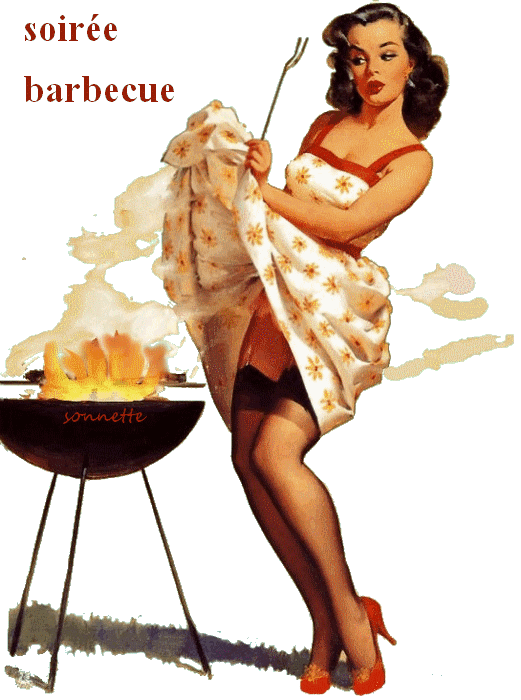

How was French cuisine toppled as the king of fine dining?
October 20, 2016
In the food world, one of the biggest stories of the last 50 years has been the waning of French culinary authority, the end of a 300-year reign.
In last year’s ranking of “The World’s Fifty Best Restaurants,” only one French restaurant, Mirazur, appears in the top 10. And its menu reflects modernist (“molecular”) gastronomy – a recent trend of using chemistry in the kitchen – rather than anything associated with traditional French cuisine.
Since the 18th century, France had been equated with gastronomic prestige. The focus of its cuisine has been simplicity, developed as a reaction against medieval reliance on spices; instead of possessing a sharp or sugary taste, its dishes contained butter, herbs and sauces based on meat juices to create a rich, smooth flavor.
The first elegant restaurant in America, Delmonico’s, was founded in New York in 1830 with a French chef, Charles Ranhofer, whose food was considered an exemplar of French tastes and standards. Until the end of the 20th century, the most prestigious restaurants around the world were French, from London’s La Mirabelle to San Francisco’s La Bourgogne.
In 1964, the first New York Times “Guide to Dining Out in New York” listed eight restaurants in its top three-star category. Seven were French. Meanwhile, beginning in 1963, Julia Child’s hugely popular television show “The French Chef” taught Americans how to replicate French dishes in their own kitchens.
So what happened?
In my recently published book, “Ten Restaurants that Changed America,” I show how one restaurant, Le Pavillon, came to epitomize the rise and fall of French cuisine.
Food ‘fit for the gods’
Four of the 10 restaurants featured in my book offer some version of French food. Delmonico’s described itself as French, but it also offered American game and seafood, while inventing dishes such as Lobster Newberg and Baked Alaska. Antoine’s, a New Orleans restaurant that opened in 1840, now portrays its cuisine as “haute Creole,” but it, too, presented itself as French for most of its history.
Chez Panisse in Berkeley, California – the original inspiration for the current farm-to-table vogue – initially tried to imitate a rural French inn before becoming one of the first restaurants in America to promote local food with high-quality, basic ingredients.
But while these restaurants reflect French influence, only one consistently and deliberately imitated Parisian orthodoxy: New York City’s Le Pavillon.
It began as a pop-up-style eatery called “Le Restaurant Français” at the French Pavilion during the New York World’s Fair of 1939-1940. But the sudden German conquest of France in the late spring of 1940 left the staff with a choice: Return to Nazi-occupied France or stay in the U.S. as refugees.
Maître d’hôtel Henri Soulé, together with those who stayed, found permanent quarters in midtown Manhattan and rebranded it “Le Pavillon.” With a preexisting reputation for excellence from the fair, the restaurant was an instant success.
Le Pavillon and Soulé soon ruled over the city’s restaurant scene, rising to become the undisputed top-ranked establishment in America, with exacting culinary standards that surpassed its Francophile competition. French writer Ludwig Bemelmans thought that Soulé provided not only the finest meals in Manhattan but also eclipsed those in France. In his memoirs, famous food critic Craig Claiborne recalled the food as “fit for the gods,” and a throng of celebrities passed through, from the duke and duchess of Windsor to the Kennedy clan (well, until they quarreled with the irascible Soulé during John F. Kennedy’s presidential campaign).
Alongside excellence, a reputation for snobbery
Most high-end American restaurants at the time were opulent but served either French standards such as duck a l'orange or dishes that weren’t particularly French, such as lamb chops.
Le Pavillon’s cuisine, however, was unabashedly pretentious. The more elaborate presentations sent the food writers into raptures: Mousse de Sole “Tout Paris” (sole stuffed with truffles, served with a Champagne sauce and a lobster sauce) or lobster Pavillon (lobster with a complicated tomato, white wine and Cognac sauce).
Some of the restaurant’s famous dishes seem rather ordinary by today’s standards. Beluga caviar was (and remains) an expensive delicacy but takes no talent to prepare. Chateaubriand steaks – a tenderloin filet usually served with a red wine reduction or a Bearnaise sauce – routinely exceeded US$100 in today’s dollars. But it takes more skill to select the cut of meat than to prepare and cook it.
Soulé himself missed the bourgeois fare of his homeland such as blanquette de veau or sausages with lentil and, paradoxically, prepared these ordinary dishes as off-menu items for customers who, he felt, could appreciate the real culinary soul of France.
Those special customers were conspicuously favored, and this is an unattractive aspect of Soulé’s legacy. To the extent that French restaurants in America, to this day, retain a reputation for snobbery and annoying social discrimination, it’s largely traceable to Soulé. He didn’t invent “Siberia,” the part of the restaurant that nobodies are exiled to, where service is slack and borderline contemptuous, but he perfected it. He was an exacting proprietor not just to his harried cooks and waiters but to customers as well, disciplining them with a look or, if necessary, harsh words if they questioned his decisions on where they were seated.
The competition for status was not all Soulé’s fault. Joseph Wechsberg, author of a book on Le Pavillon published in 1962, attributed the jockeying for position not to Soulé but rather to a preexisting “battle for survival in the status jungles of Manhattan around the middle of the 20th century.” Even in the supposedly less formal and certainly un-French restaurant scene of today, there is no evidence that sparsely decorated farm-to-table restaurants treat their customers any better than the dictatorial Soulé. Just try getting a reservation at David Chang’s Momofuku Ko in Manhattan’s East Village.
The difference was that the short, stout, charming but awe-inspiring Soulé, whom restaurant critic Gael Greene described as a “flirtatious, five-foot-five cube of amiability,” never pretended to be anything but confidently elitist in running his operation. He routinely referred to himself in the third person and treated his staff in a dictatorial, patronizing fashion. Soulé even defied his landlord’s demand for a better table. When, in response, the rent was exponentially raised, he preferred to move the restaurant rather than give in.
Soulé’s death from a heart attack at the age of 62 in 1966 was marked by adulatory obituaries. Claiborne memorialized him as “the Michelangelo, the Mozart and the Leonardo of the French restaurant in America.” The restaurant staggered on after Soulé, before shutting its doors in 1971.
Today it’s all about globalization and innovation
Following the sudden closing of Le Pavillon, spin-offs – Le Veau d’Or and La Caravalle – would flourish. But if Le Pavillon is now largely underappreciated or even unknown, it is because of the demise of the French model it established: formality and elegance that veered on intimidation.
Even before Soulé’s death, a hint of the new competition had emerged in New York’s Four Seasons. The restaurant, which recently closed, opened in 1959 as a daring anomaly: an elegant, expensive restaurant that was not French but rather international and eclectic in its menu offerings.
Today, grand French cuisine has yielded to Asian and Latin American influence, the rise of Italian cuisine, the cult of local ingredients and the farm-to-table model.
From the 1970s to the 1990s, we witnessed the growing influence of Asian tastes: both specific cuisine (Thai, high-end Japanese) and Asian-European fusions (promoted by chefs such as Jean-Georges Vongerichten). There was also the Italian challenge to French hegemony. Italian cuisine in its American “Mediterranean” form offered simpler, more lightly treated preparations: grilled meat or salads, rather than elaborate, rich sauces.
Over the past decade, we’ve seen the rise of new centers of culinary innovation, whether it’s Catalonia, Spain (where molecular gastronomy was pioneered in the 1990s), or Denmark, where foraging for food and new Nordic cuisine is in vogue.
These days French cuisine seems traditional – and not in a particularly good way. Unfortunately, its association with snobbery only contributed to its demise – a reputation that Henri Soulé did nothing to discourage.
https://theconversation.com/how-was-french-cuisine-toppled-as-the-king-of-fine-dining-66667
2 notes
·
View notes